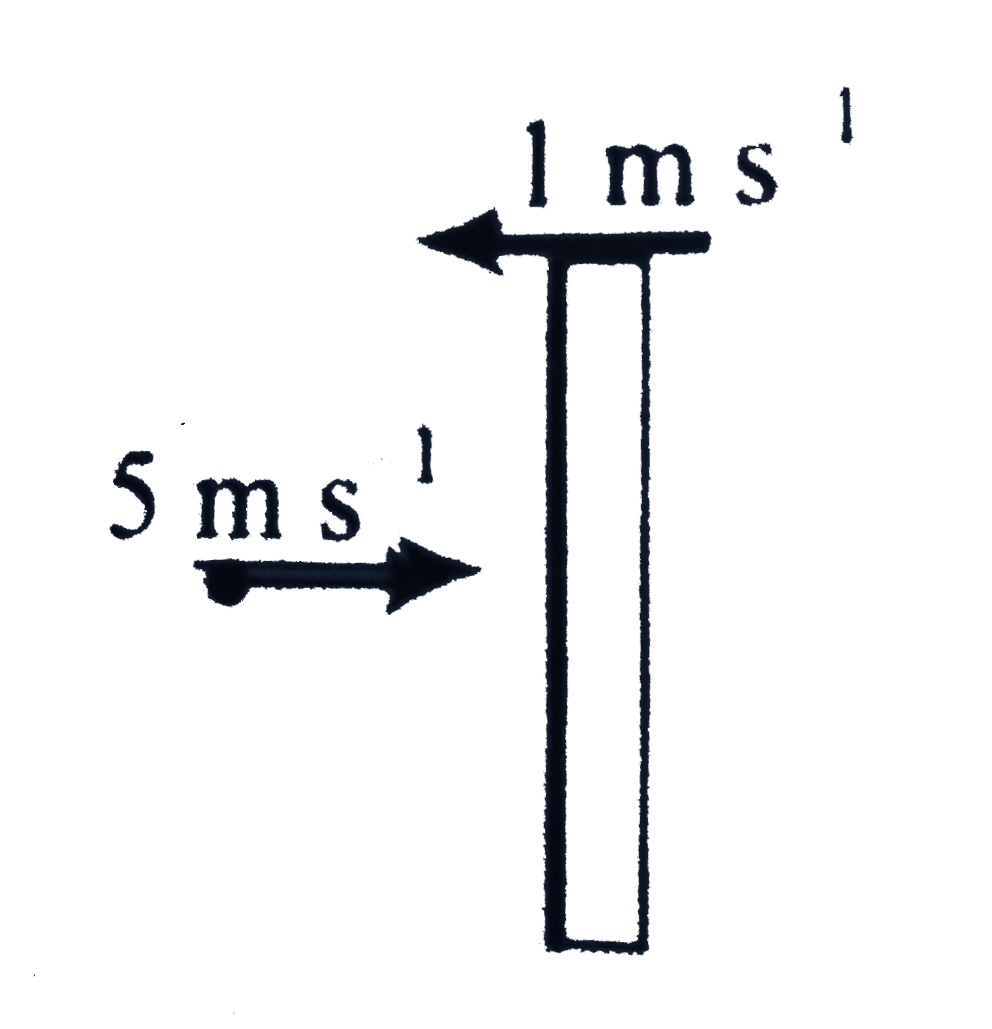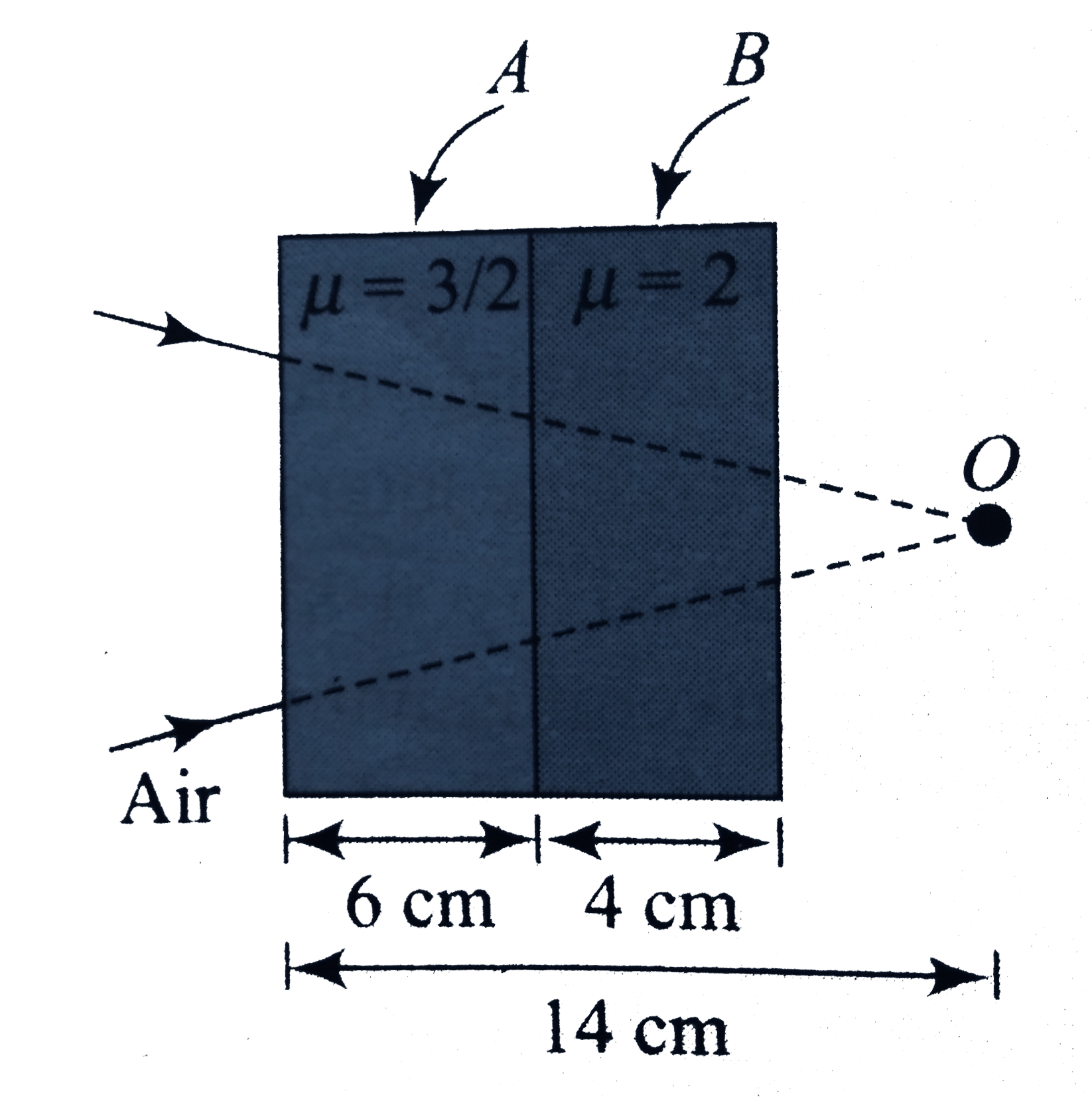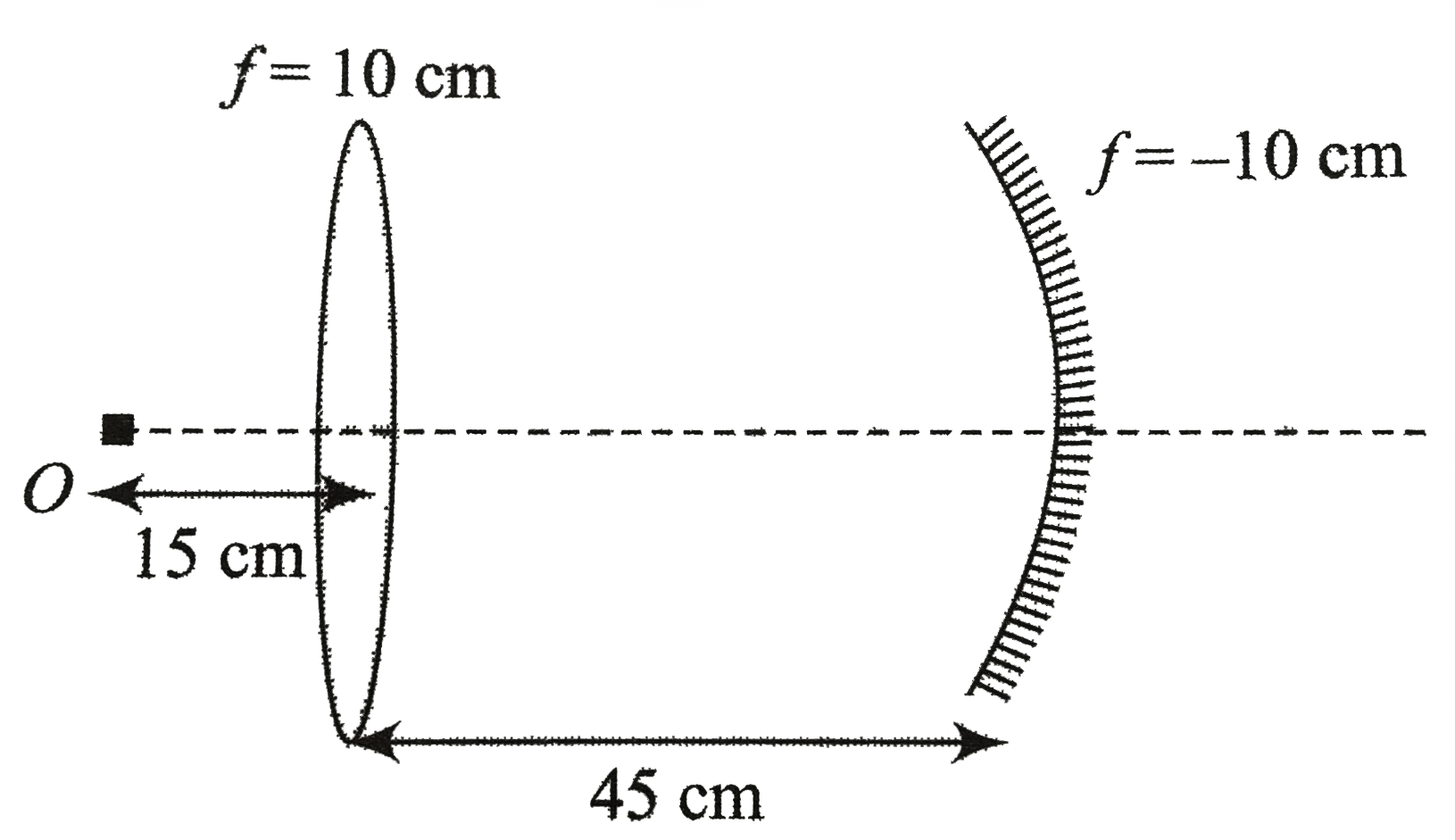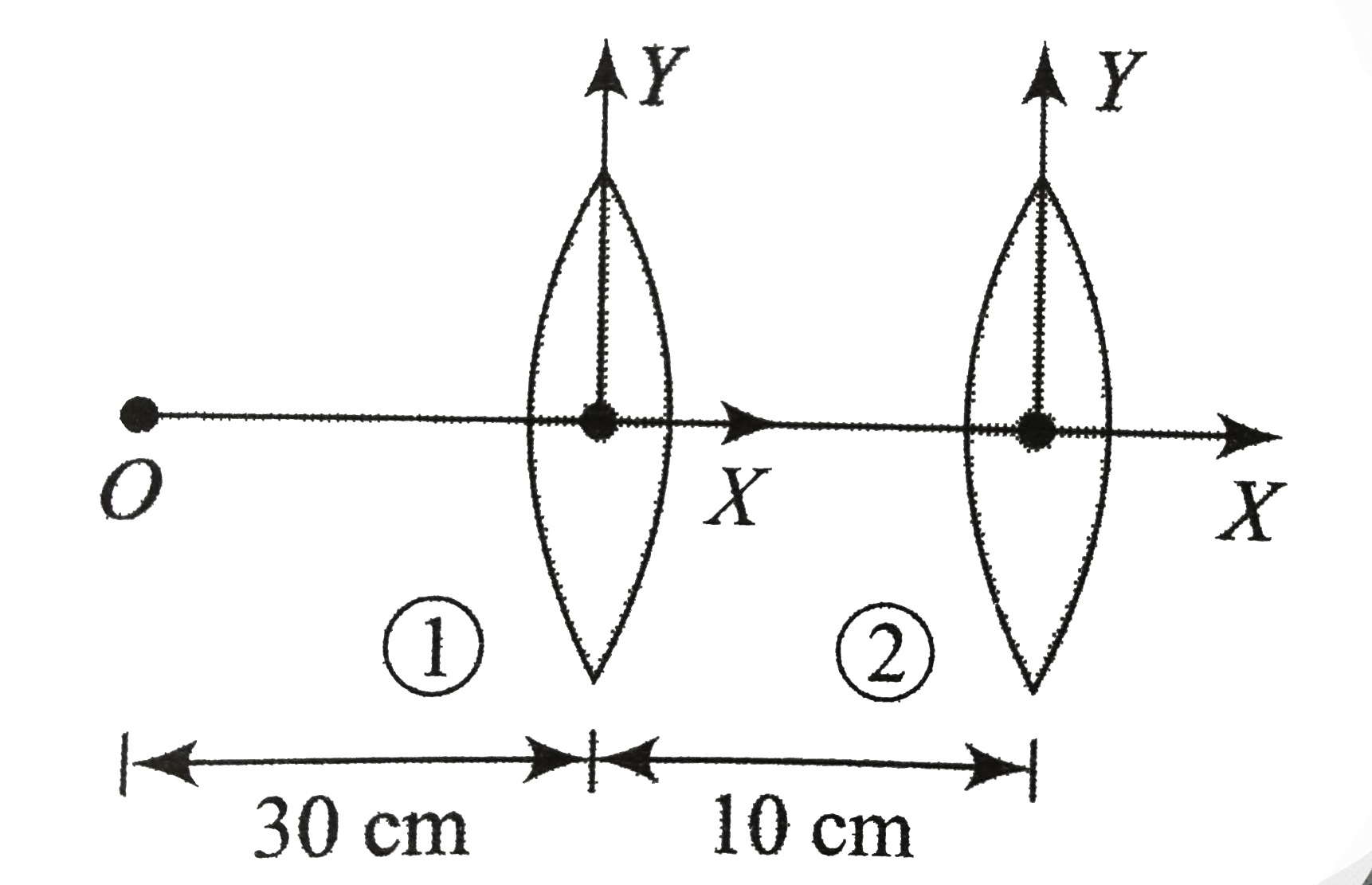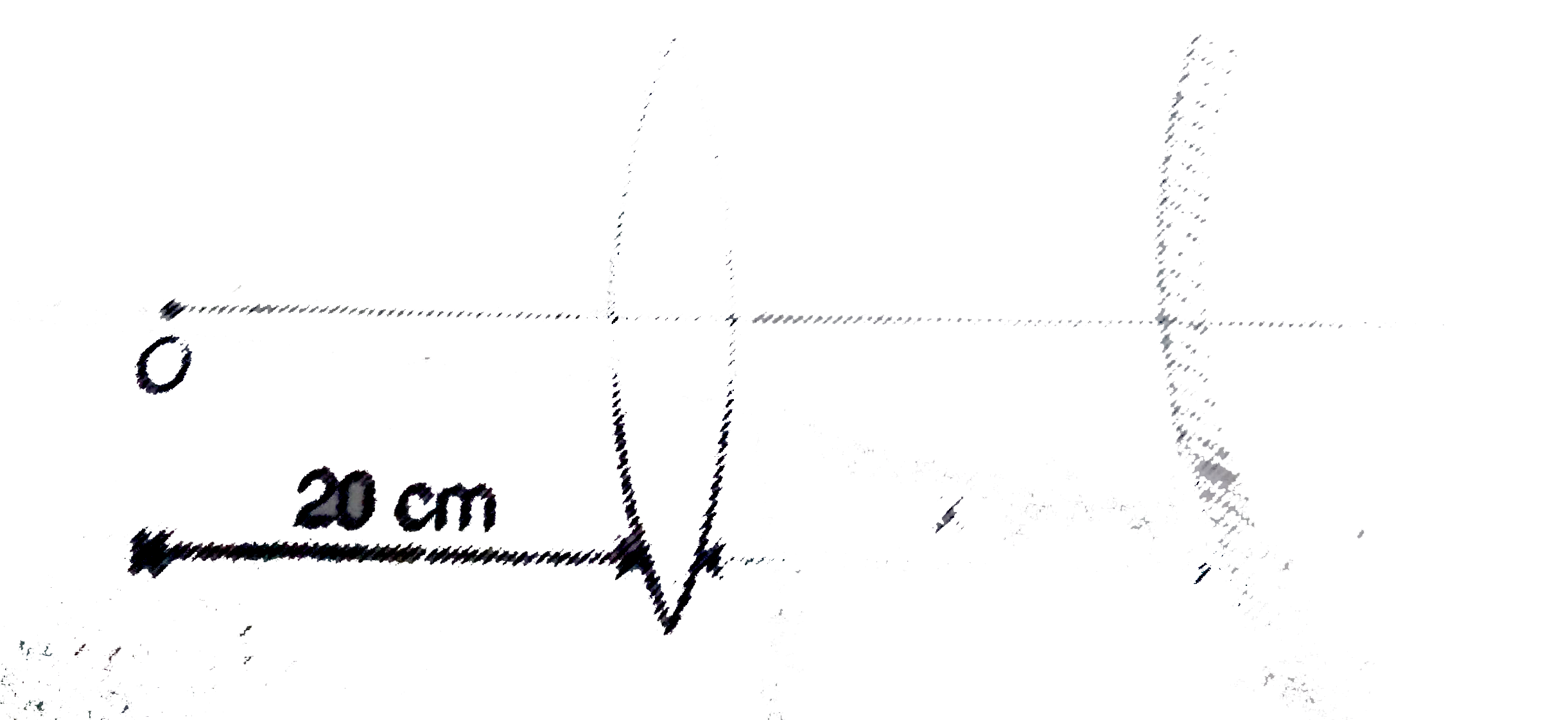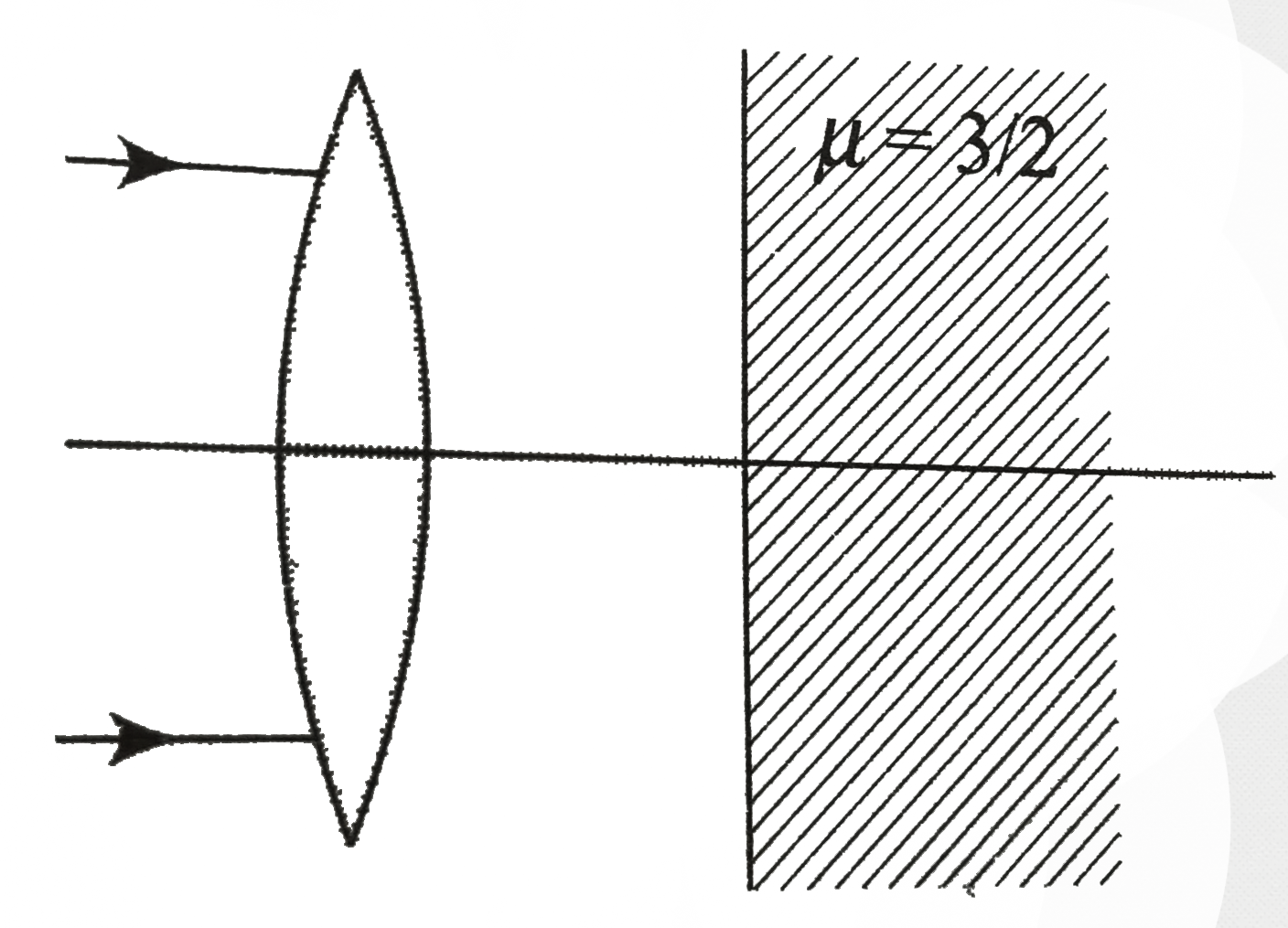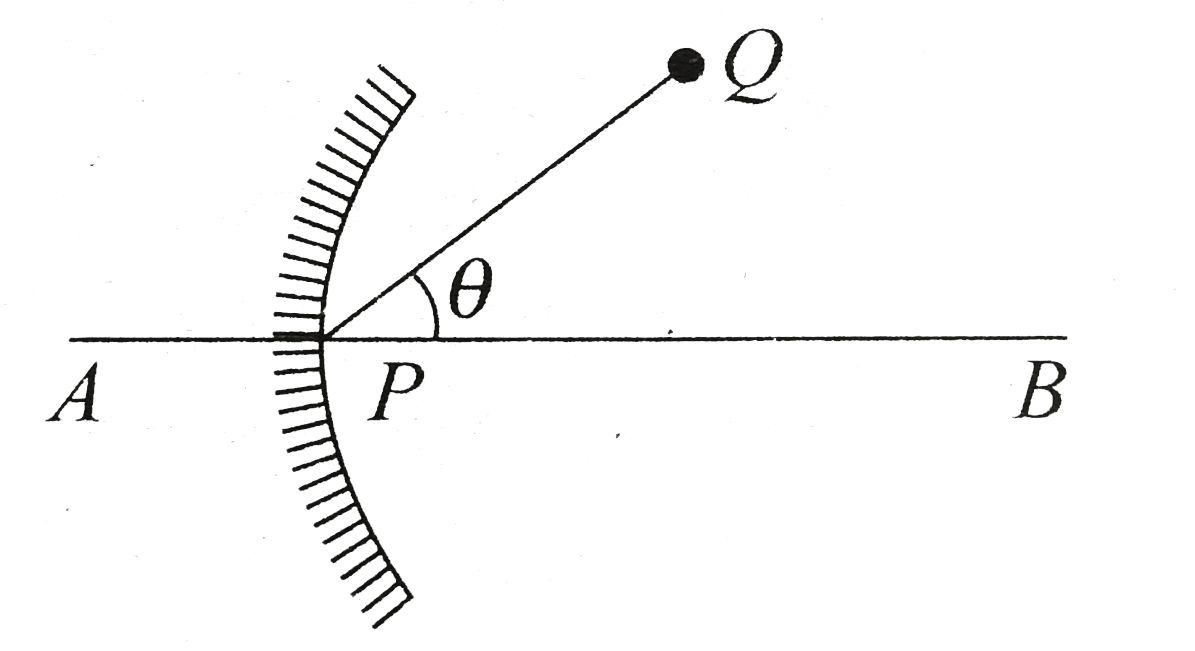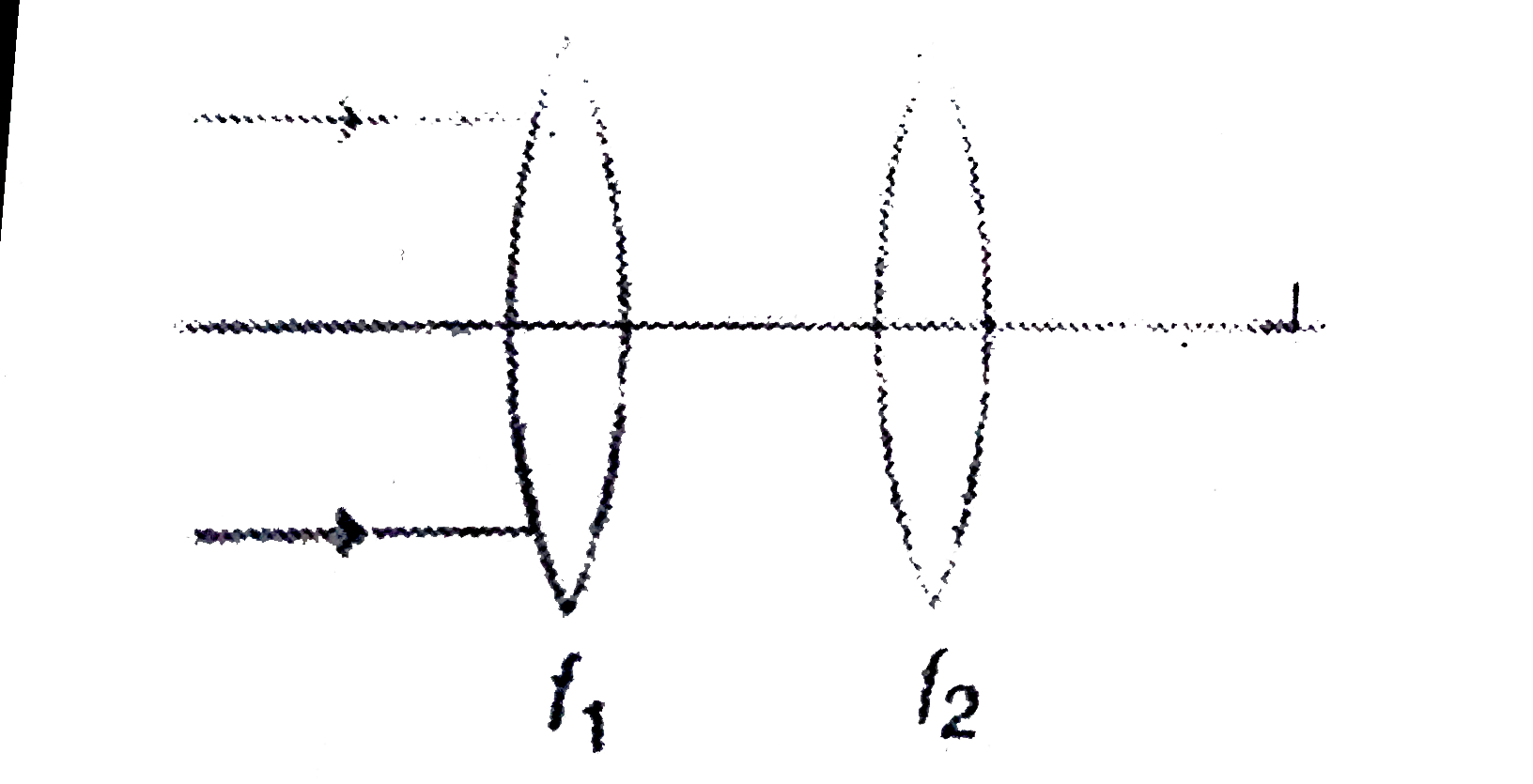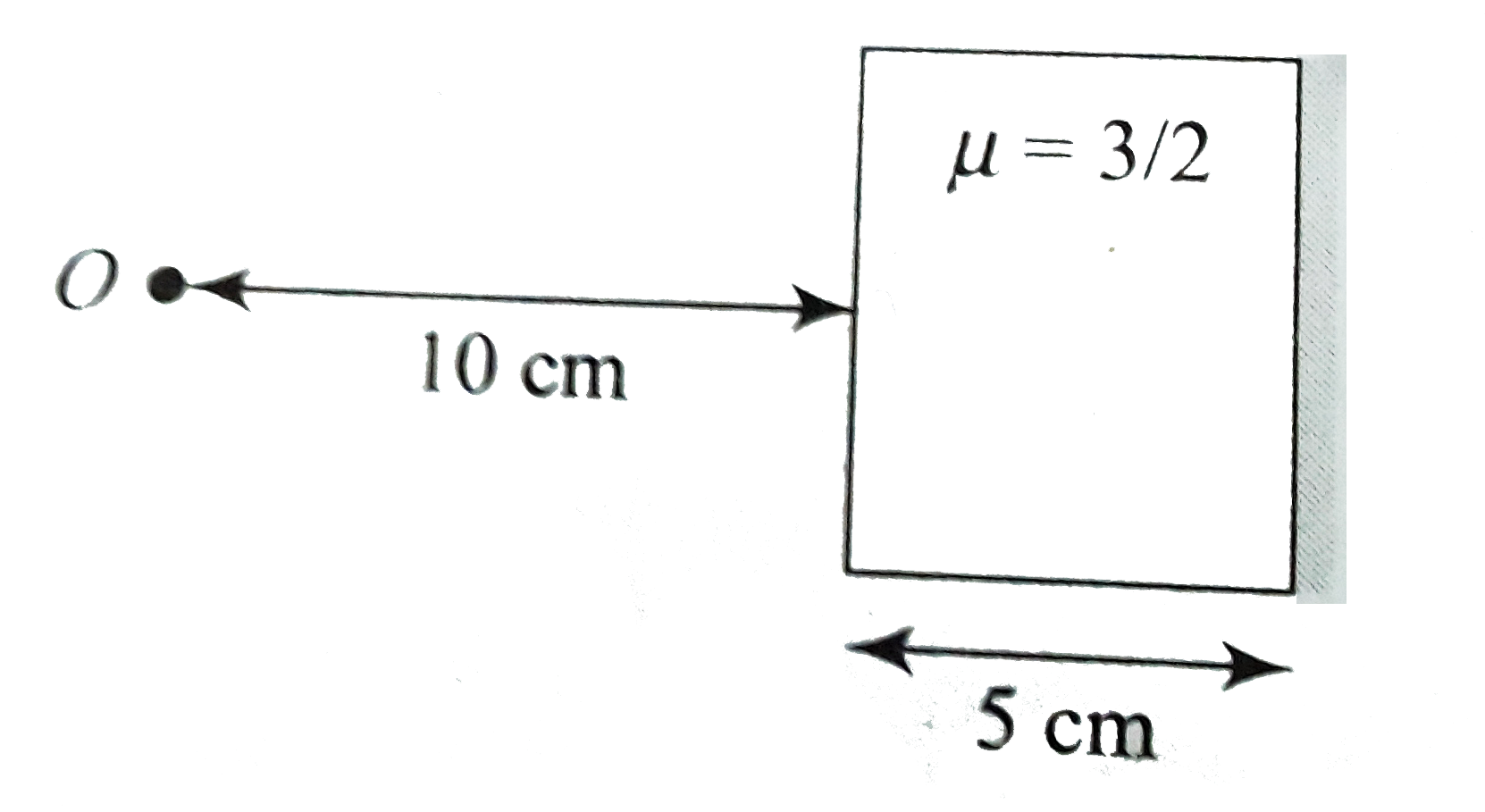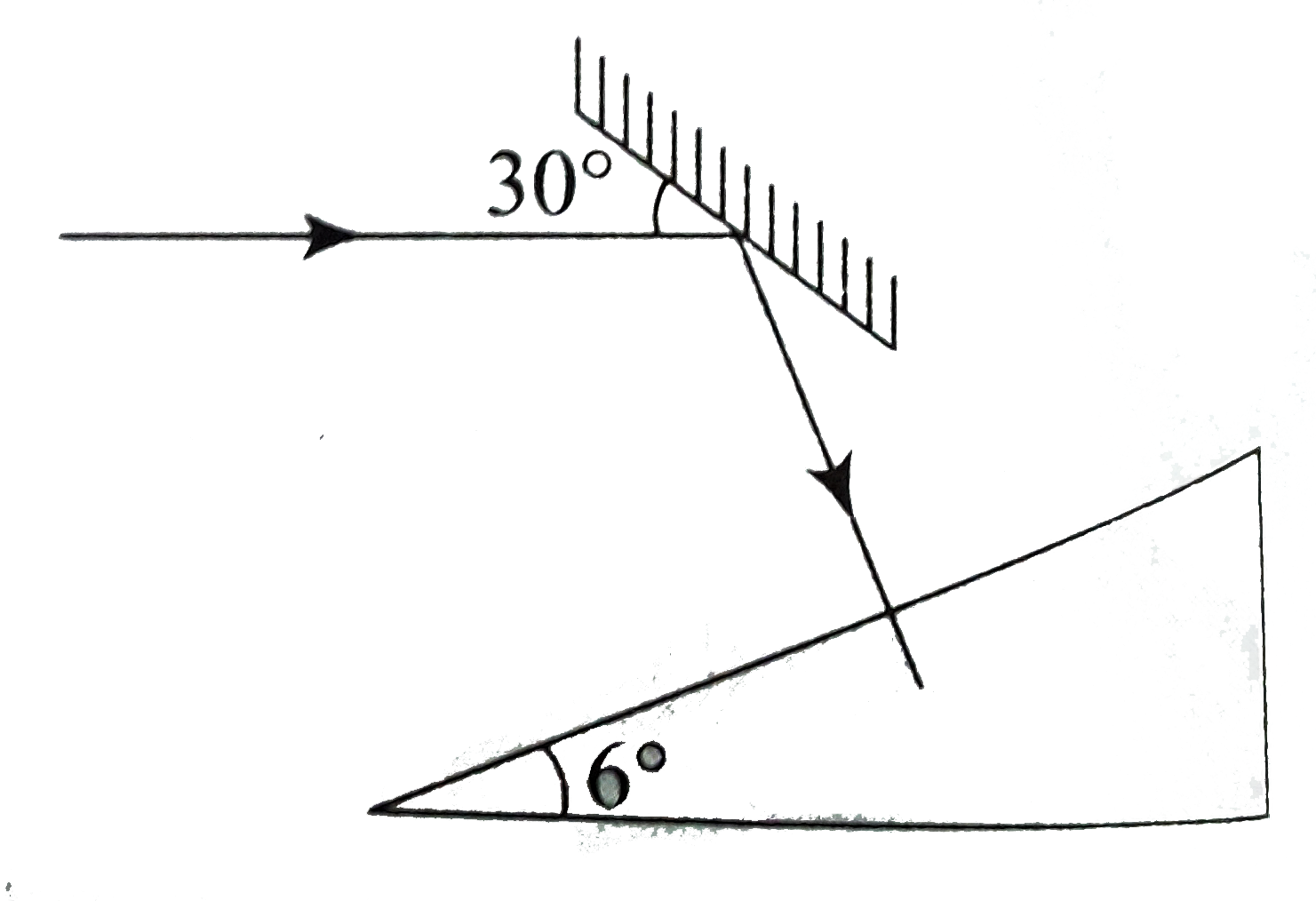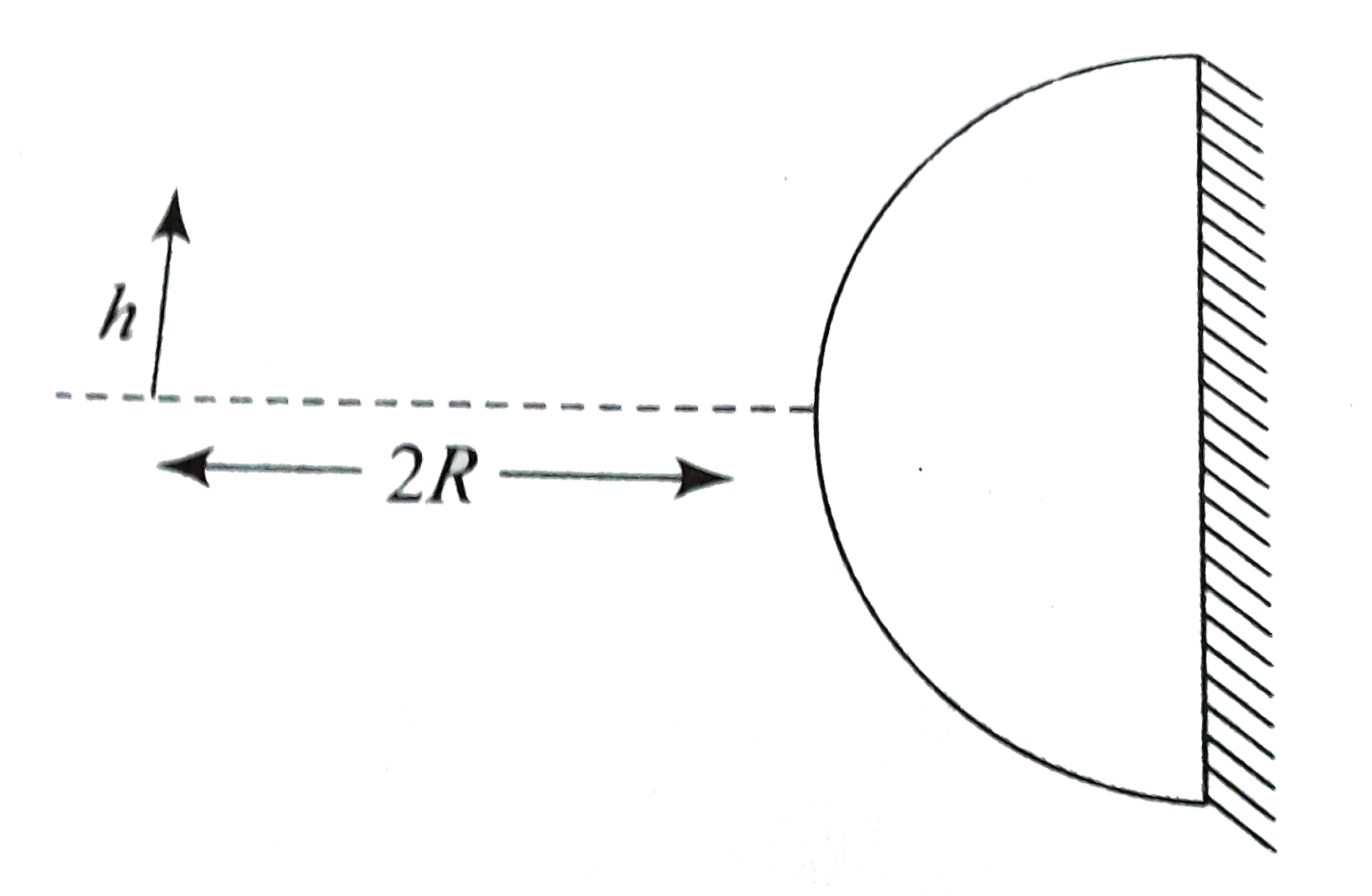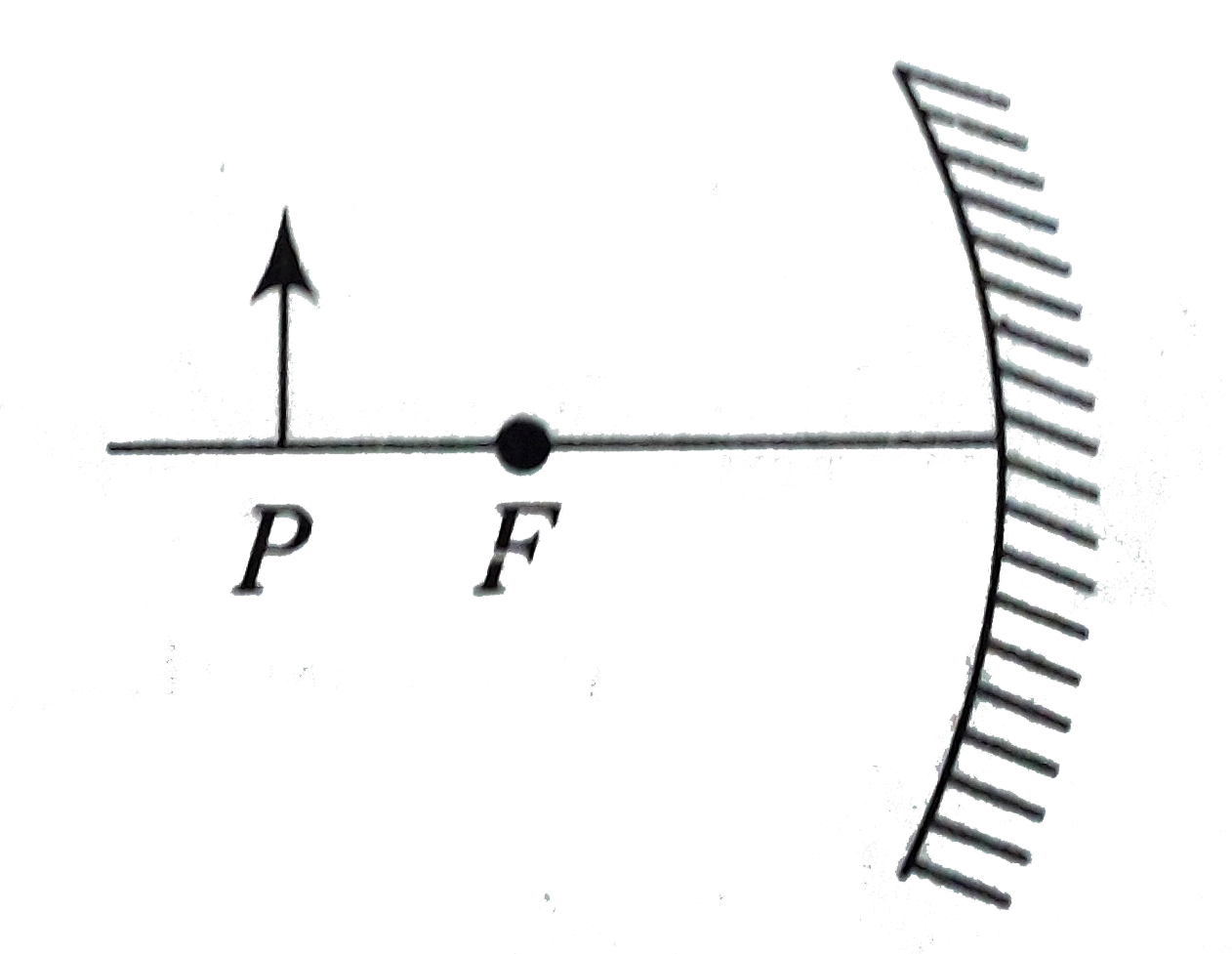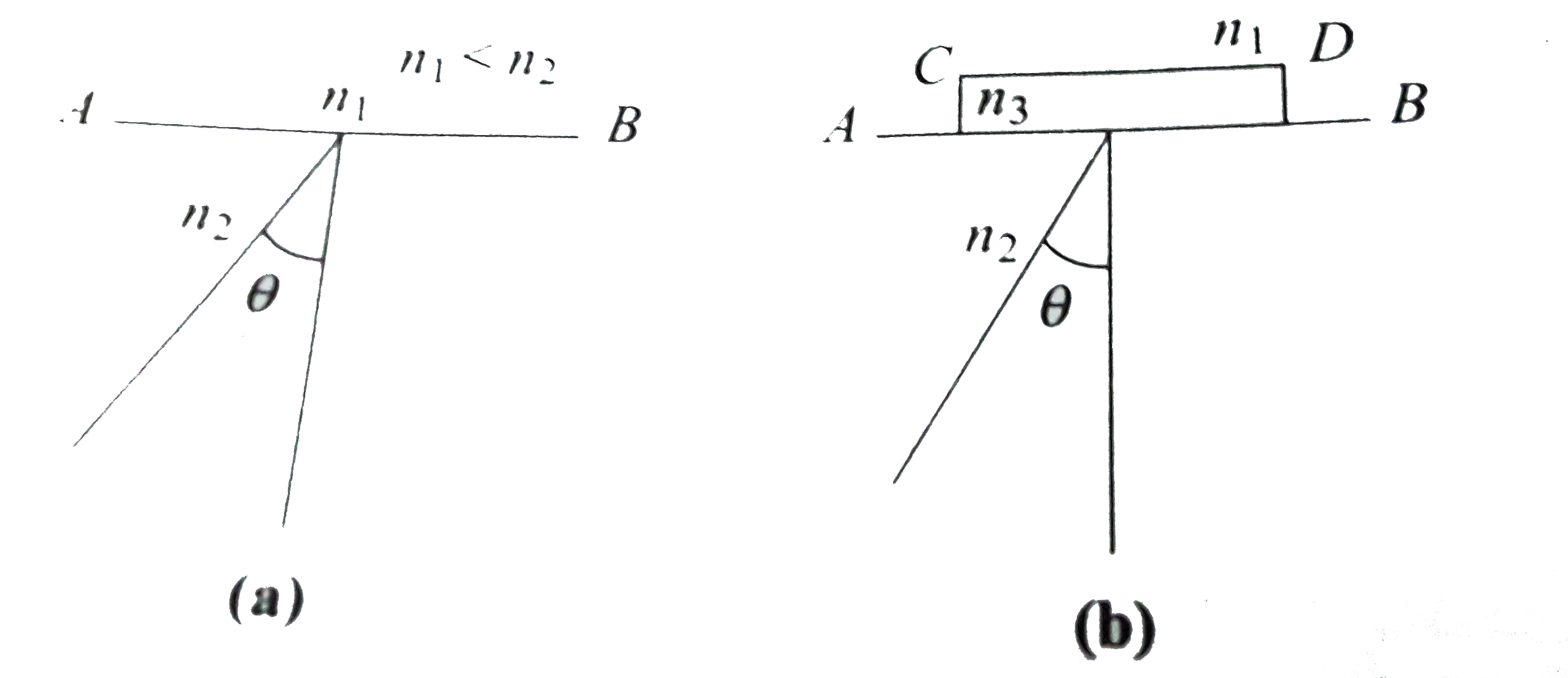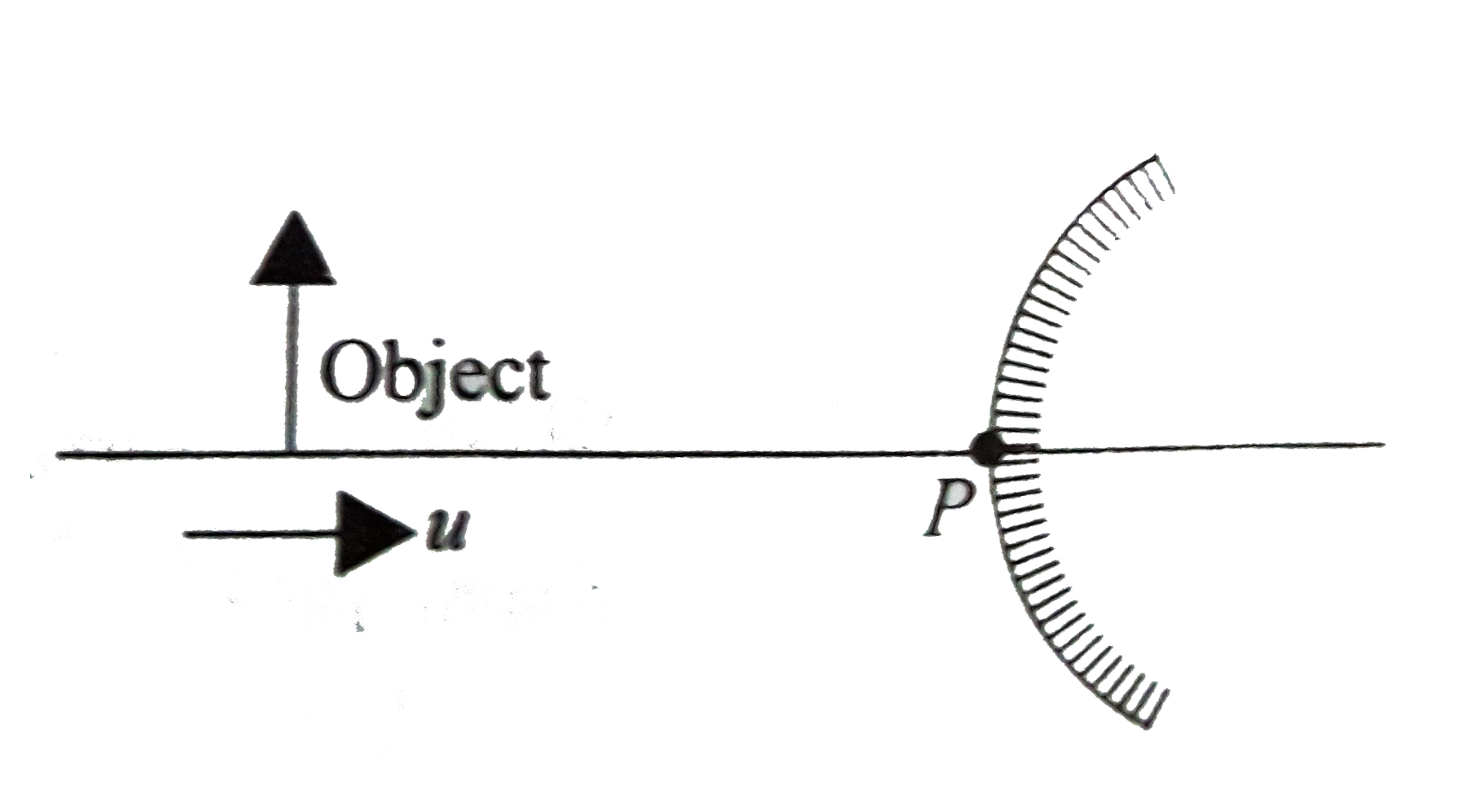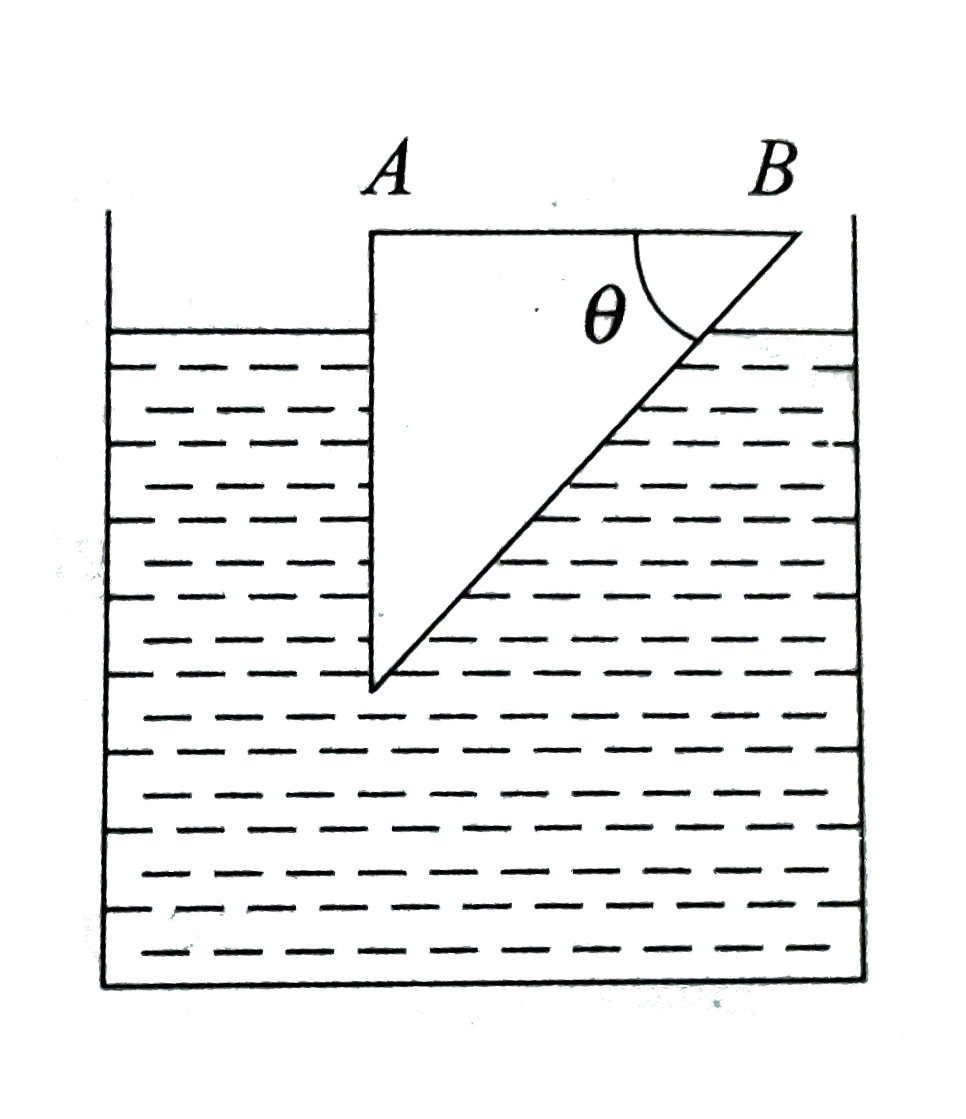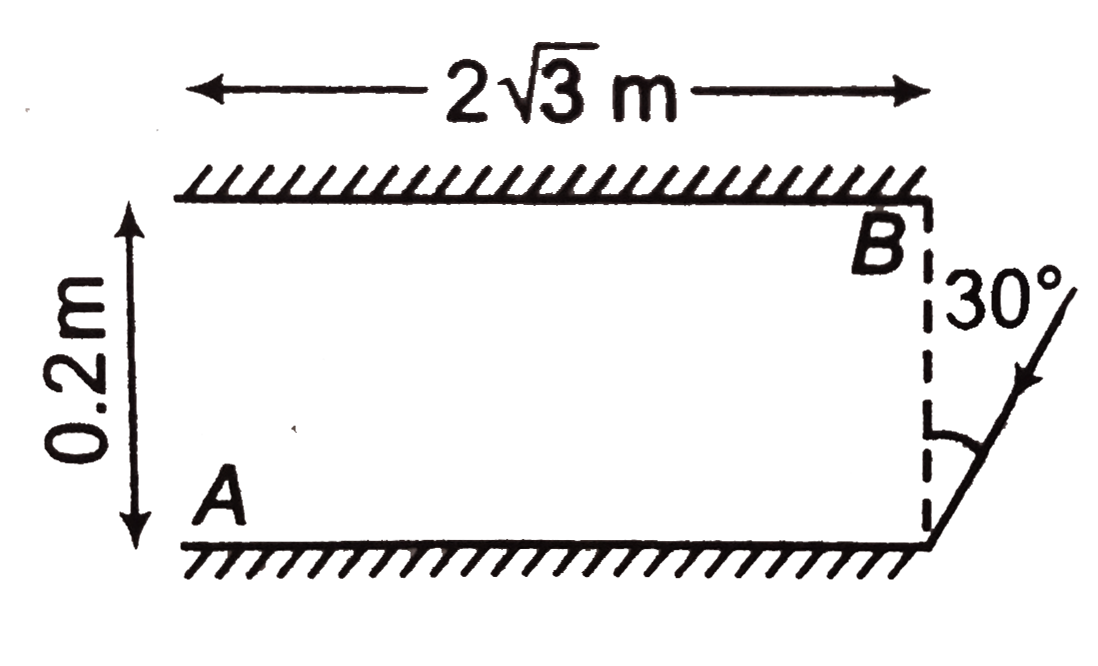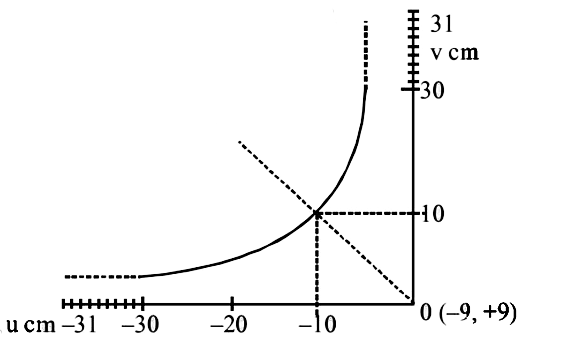Subjective from CENGAGE PHYSICS (ENGLISH) GEOMETRICAL OPTICS for Class 12
| Class 12 | PHYSICS |
| Chapter | GEOMETRICAL OPTICS |
| CENGAGE PHYSICS (ENGLISH) | Subjective |
| Medium | English |
| Academic Year | 2023-2024 |
Question 14
In Figure. , a plane mirror is moving with a uniform speed of 5ms−1 along negative x-direction and observer O is moving with a velocity of 10ms−1. What is the velocity of image of a particle P, moving with a velocity as shown in the figure, as observed by observer O? Also find its direction.
 View Solution
View SolutionQuestion 15
State the following statements as TRUE or FALSE.
a. A convex mirror cannot from a real image for a real object.
b. The image formed by a convex mirror is always diminished and erect.
c. Virtual image formed by a concave mirror is always enlarged.
d. Only in the case of a concave mirror, it may happen that the object and its image move in same direction.
e. In the case of a concave mirror, the image always move faster than the object.
f. If an object is placed in front of a diverging mirror at a distance equal to its focal length, then the height of image formed is half of the height of object.
g. For two positions of an object , a concave mirror can form englarged image.
h. Concave mirror is used as a rear view mirror in motor vehicles.
i. If some portion of the mirror ois covered, then complete image will be formed but of reduced brightness.
j. A plane mirror always forms an erect iamge of same size as that of the object.
k. The image formed by a plane mirror has left-right reversal.
l. A virtual object means a converging beam. View SolutionQuestion 16
a. An object 1 cm high is placed at 10cm in front of a concave mirror of focal length 15 cm. Find the position, height, and nature of the image.
b. A point source S is placed midway between two converging mirrors having equal focal length f as shown in Figure. Find the value of d for which only one image is formed.
 View Solution
View SolutionQuestion 27
Converging rays are incident ono a convex spherical mirror so that their extensions intersect 30cm behind the mirror on the optical axis. The reflected rays form a diverging beam so that their extensions intersect the optical axis 1.2 m from the mirror. Determine the focal length of the mirror.
 View Solution
View SolutionQuestion 35
Identify the True or False statements.
a. A glass slab cannot deviate the light.
b. A glass slab can produce lateral displacement.
c. The shift produced by a slab depends ono the converging and diverging nature of beam.
d. Apparent shift in case of a slab always occurs in the direction of light ray travelling.
e. The shift produced by a slab can never exceed its thickness. View SolutionQuestion 39
A converging set of ray, traveling from water to air, is incident on a plane interface. In the absence of the interface, the rays would have converged to a point O, 60 cm above the interface. However, dur to refraction the rays will bend. At what distance above the interface will the rays actually converge?
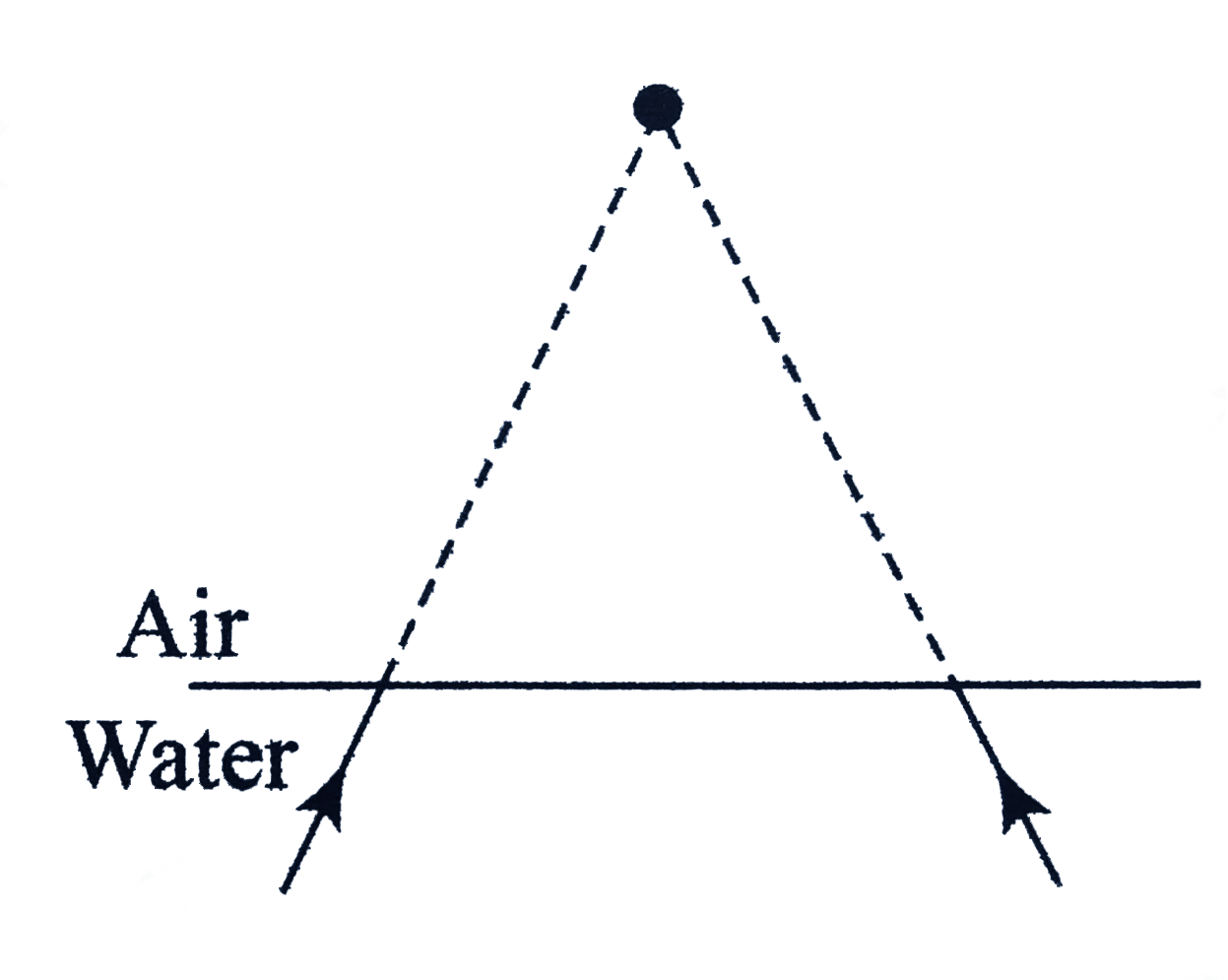 View Solution
View SolutionQuestion 40
A tank contains three layers of immiscible liquids. The first layer is of water with refractive index 4/3 and thickness 8cm. The second layer is of oil with refractive index 3/2 and thickness 9cm while the third layer is of glycerine with refractive index 2 and thickness 4cm. Find the apparent depth of the bottom of the container.
 View Solution
View SolutionQuestion 46
The image of an object kept at a distance of 30 cm in front of a concave mirror is found to coincide with itself. If a glass slab (μ=1.5) of thickness 3 cm is introduced between the mirror and the object, then
a. Identify, in which direction the mirror should be displaced so that the final image may again coincide with the object itself.
b. Find the magnitude of displacement.
 View Solution
View SolutionQuestion 47
In figure, a fish watcher watches a fish through a 3.0cm thick glass wall of a fish tank. The watcher is in level with the fish, the index of refraction of the glass is 8/5 and that of the water is 4/3.

To the fish, how far away does the watcher appear to be?
To the watcher, how far away does the fish appear to be?View SolutionQuestion 48
An observer can see through a pin-hole the top end of a thin<br> rod of height h,placed as shown in the figure. The beaker height is 3h and its radius h. When the beaker is filled with a liquid up to a height 2h, he can see the lower end of the rod. Then, the refractive index of the liquid is

(a) 52 , (b) √52 , (c) √32 , (d) 32View SolutionQuestion 49
A vesserl contains a slab of glass 8cm thick and of refractive index 1.6 . Over the slab, the vessel is filled by oil of refractive index μ upto height 4.5 cm and then by another liquid, i.e., water of refractive index 4/3 and height 6cm as shown in Figure. An observer looking down from above observer that a mark at the bottom of glass slab appears to be raised up to a position 6cm from bottom of the slab. Find refractive index of oil (μ) .
 View Solution
View SolutionQuestion 52
The n transparent slabs of refractive index1.5 each having thickness 1cm, 2 cm,…to n cm are arranged one over another. A point object is seen through this combineation with near perpendicular light. If the shift of object by the combination is 1 cm, then find the value of n. View SolutionQuestion 53
A concave mirror with its optic axis vertical and mirror facinig upward is placed at the bottom of the water tank. The radius of curvature of the mirror is 40 cm and refractive index for water μ=4/3 . The tank is 20 cm deep and if a bird is flying over the tank at a height of 60 cm above the surface of water, find the position of image of the bird. View SolutionQuestion 55
A concave mirror of radius 40 cm lies on a horizontal table and water is filled in it upto a height of 5.00 cm. A small dust particle floats on the water surface at a point P vertically above the point of contact of the mirror with the table. Locate the image of the dust particle as seen from a point directly above it. the refractive index of water is 1.33.
 View Solution
View SolutionQuestion 65
Light is incident normally on face AB of a prism as shown in Figure. A liquid of refractive index μ is placed on face AC of the prism. The prism is made of glass of refractive indes 3/2 . Find the limits of μ for which total internal reflection takes place on the face AC.
(A)μ>√32 (B)3√34>μ (C)μ>√3 (D)μ<√32 View Solution
View SolutionQuestion 68
The path of a ray of light passing through an equilateral glass prism ABC is shown in figure. The ray of light is incident on face BC at the critical angle for just total internal reflection. The total internal reflection. The total angle of deviation after the refraction at face AC is 108∘. Calculate the refractive index of the glass.
 View Solution
View SolutionQuestion 69
In an isosceles prism of angle 45∘, it is found that when the angle of incidence is same as the prism angle, the emergen ray grazes the emergent surface.
Find the refractive index of the material of the prism. For what angle of incidenc, the angle of deviation will be minimum?
 View Solution
View SolutionQuestion 71
Two identical thin isosceles prisms of refracting angle A and refractive index μ are placed with their bases touching each other and this system can collectively act as a crude converging lens. A parallel beam of light is incident on this system as shown in Figure. Find the focal length of this so called converging lens.
 View Solution
View SolutionQuestion 72
Identify the statements are True of False.
a. The equation μ2v−μ1u=μ12−μ1R is applicabel to a plane surface for R=∞ .
h. In the above equation, μ1 is medium in which the object is placed and μ2 is the medium in which the image is formed.
c. In the figure shown, the real image of object O is formed at a distance 5R in the medium.

d. In figure, the image of an object O place on the center face of the sphere is formed at infinity,.
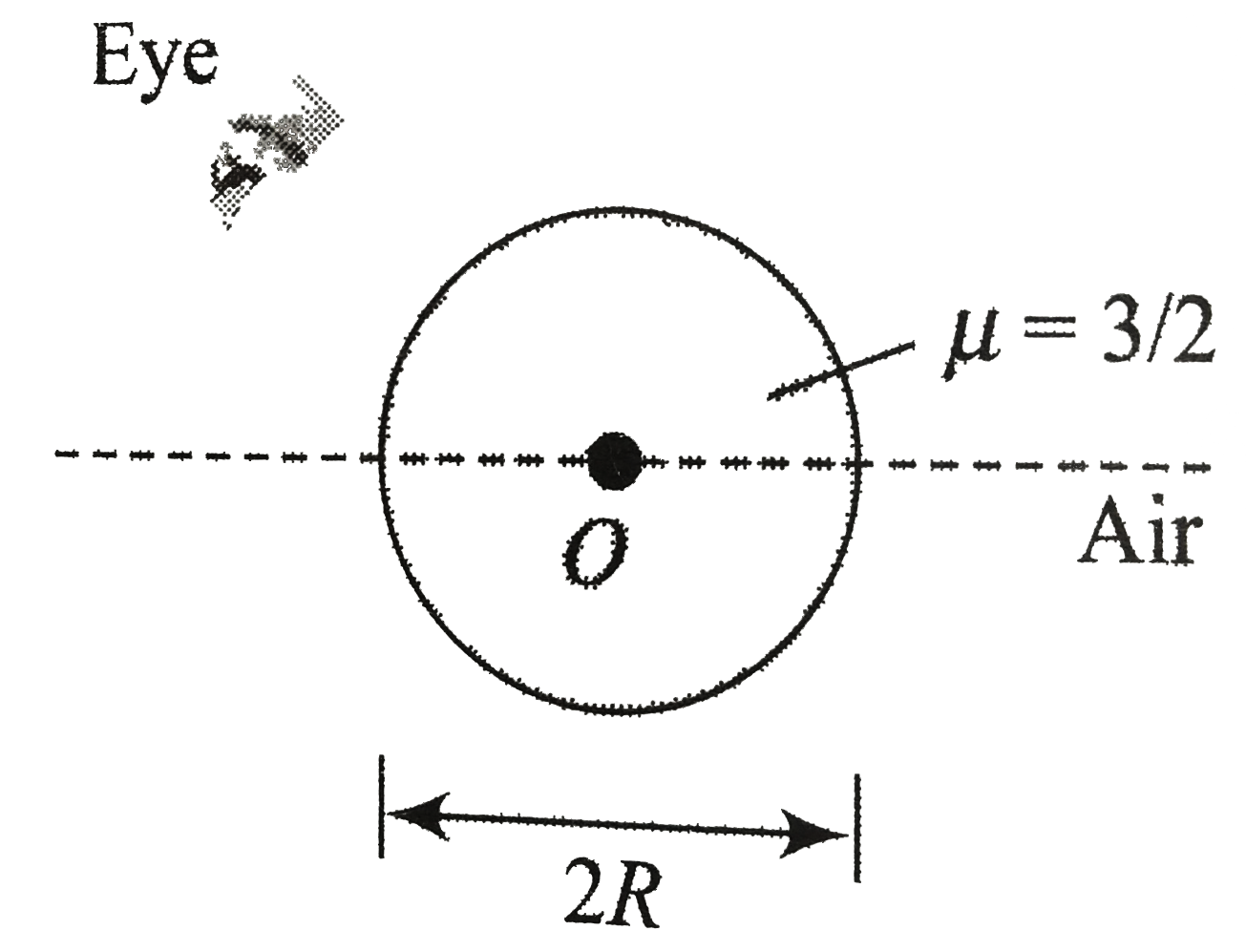
e. In fig , the image of an object O placed on the opposite face of the sphere is foremd at infinity.
 View Solution
View SolutionQuestion 73
One end of a cylindrical glass rod shown in figure, is ground to a hemispherical surface of radius R=20mm.

a. Find the image distance of a point object on the axis of the rod, 80mm to the left of the vertex. The rod is in air.
b. Let the same rod be immersed in water of refractive index 4/3 , the other quantities having the same values as before. Find the image distance. View SolutionQuestion 81
One end of a horizontal cylindrical glass rod (μ=1.5) of radius 5.0 cm is rounded in the shape of a hemisphere. An object 0.5 mm high is placed perpendicular to the axis of the rod at a difference of 20.0 cm from the rounded edge. Locate the image of the object and find its height.View SolutionQuestion 83
Figure shows a transparent hemisphere of radius 3.0 cm made of a material of refractive index 2.0. (a) A narrow beam of parallel rays is incident on the hemisphere as shown in the figure. Are the rays totally reflected at the plane surface ? (b) Find the image formed by the refraction at the first surface. (c) Find the image formed by the reflection or by the refraction at the plane surface. (d) Trace qualitatively the final rays as they come out of the hemisphere.
 View Solution
View SolutionQuestion 87
A spherical surface of radius 30 cm separates two transparent media A and B with refractive indices 1'33 and 1.48 respectively. The medium A is on the convex side of the surface. Where should a point object be placed in medium A so that the paraxial rays become parallel after refraction at the surface ?View SolutionQuestion 89
A solid hemispherical bowl of radius R, made of glass, is placed on a flat horizontal surface with its curved surface on the ground. A small object is placed under the hemisphere at the center of the curved surface. If an observer sees the object directly above the plane surface, Where will the object appear to be ?View SolutionQuestion 92
A converging bundle of rays travel from water (refractive index 4/3 ) to glass (refractive index 1.5) through a convex interface of radius 16cm. In the absence of the interface, The rays would have converged to a point 32 cm from the pole of the interface. Where will the rays actually meet after refraction?View SolutionQuestion 94
Choose the following statement a True of False.
a. The real image formed by a lens is always inverted.
b. The image formed by a lens is always inverted.
c. The image formed by a concave lens is always erect and diminished.
d. An air bubble inside water acts like a concave lens.
e. The distance between a real object and its real image formed by a single lens cannot be more than 4f.
f. I an object is moved at a constant speed toward a convex lens from infinity to focus, then its image moves slower in the begninning and faster later on, away from the lens.
g. The focal length of a glass (μ=1.5) lens is 10 cm in air. When it is completely immersed in water its focal length will become 40cm. View SolutionQuestion 102
A converging bundle of rays is intercepted by a biconcave lens. The radii of curvature of both surfaces are 20cm and the refractive index of the material of the lens is 1.5. If the rays originially converged to a point 10cm in front of the lens, where will they now converge after passing through the lens?
 View Solution
View SolutionQuestion 115
When an object is placed at the proper distance ot the left of a converging lens, the image is focused in a screen 30 cm to the right of lens. A dieverging lens is now placed 15 cm to the right of the converging lens and it is found that the screen must be moved 19.2cm farther to the right to obtain a sharp image. Find the focal length of the diverging lens. View SolutionQuestion 117
A convex lens is cut in half along its principal axis and the two halves are separated by a distance of 12cm. An object is placed 6cm in front of the lens as shown in Figure., Two sharp images are formed on the screen placed 80cm from the object. What is the focal length of the lens?
 View Solution
View SolutionQuestion 121
The convex side of a thin concavo-convex lens of glass of refractive index 1.5 has a radius of curvature of 20cm. The concave surface has a radius of curvature of 60cm. What is the focal length of the lens? The convex side is silvered and placed on a horizontal surface. What is the effective focal length of the silvered lens? The concave part is filled with water with refractive index 1.33. What is the effective focal length of the combined glass and water lens? If the convex side is silvered what is the new effective focal length of the silvered compound lens? View SolutionQuestion 122
The source is placed 30 cm from a convex lens which has a focal length of 20cm. The source is initially located on the axis of the lens. The lens is then cut into two halves in a plane along the principal axis. The two halves are separated by a distance of 4mm. What will be the locations of the image of the source? View SolutionQuestion 127
On a horizontal plane mirror, a thin equiconvex lens of glass is placed and when the space between the lens and mirror is filled with a liquid, an object held at a distance D which is 30cm vertically above the lens is found to coincide with its own image as shown in Figure. If equiconvex lens of glass has refractive index μ=1.5 and radius of curvature R=20cm then find refractive index of the liquid.
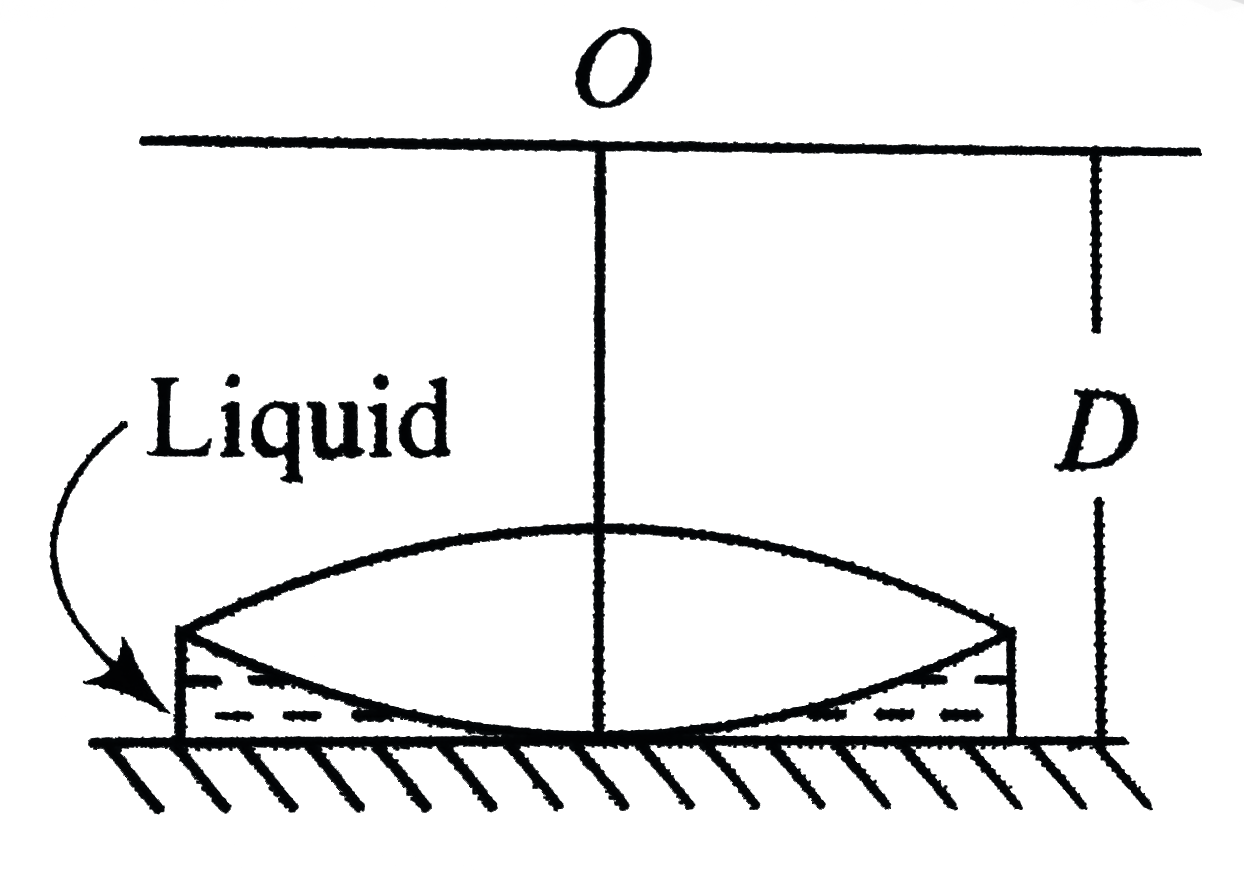 View Solution
View SolutionQuestion 128
A pin is placed 10cm in front of a convex lens of focal length 20cm, made of a material having refractive index 1.5 . The surface of lens farther away from the pin is silvered and has a radius of curvature 22cm. Determine the position of the final image. Is the image real or virtual?
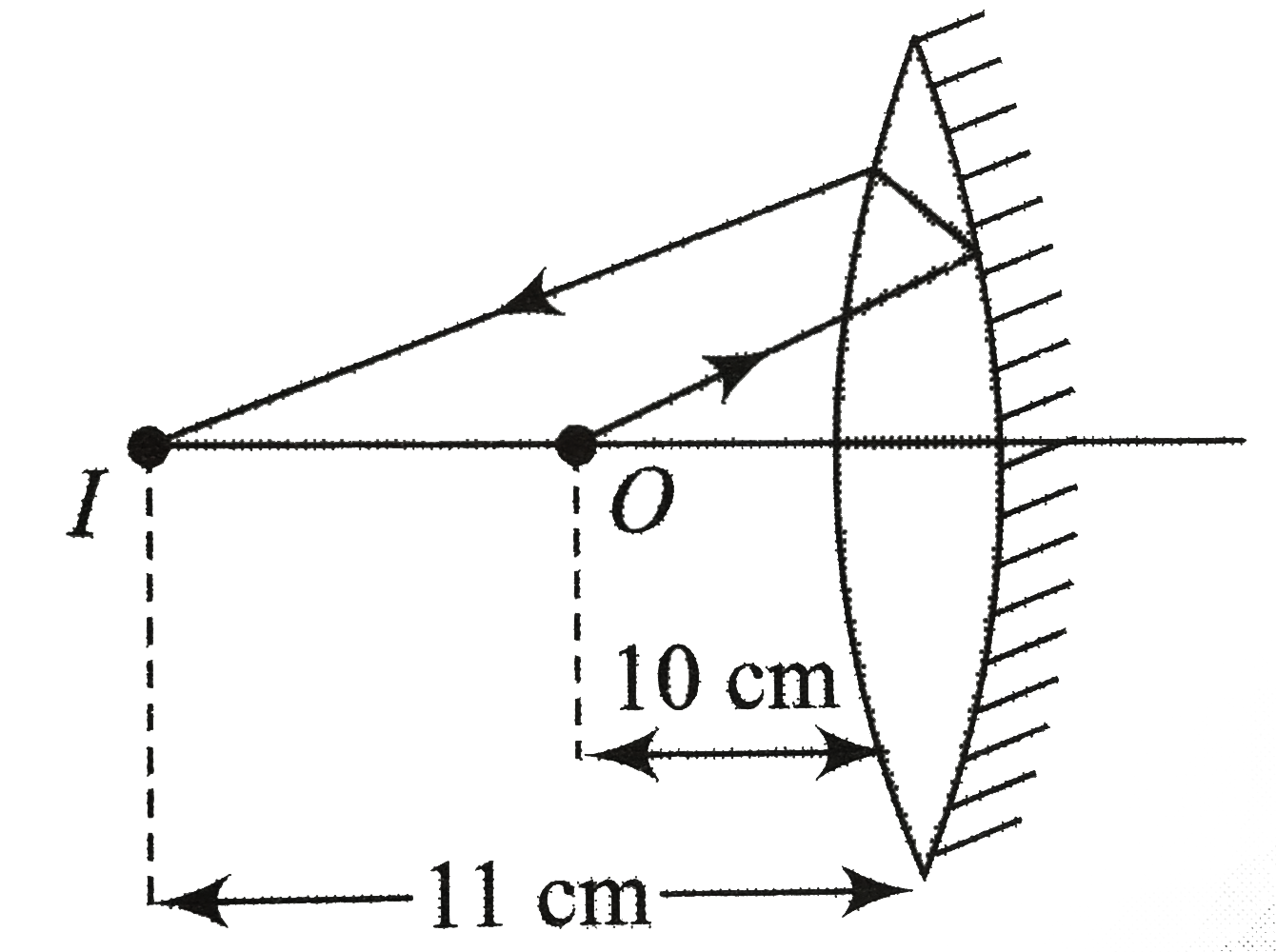 View Solution
View SolutionQuestion 129
A convex lens of glass (μ=1.5) is formed by combining two surfaces of radii R1=60cm and R2=30cm . It is cut into two parts in two different ways as shown in Figure .

Find:
a. the focal length of the lens.
b. in figure (a), the focal length of left portion and that of the right portion.
c. in figure (b), the focal length of the upper part and that of the lower part. View SolutionQuestion 131
There is a spherical glass shell of refractive index 1.5, inner radius 10 cm and outer radius 20 cm. Inside th espherical cavity, there is air. A point object is placed at a point O at a distance of 30cm from the outer spherical surface. Find the final position of th eimage as seen eye.
 View Solution
View SolutionQuestion 132
A direct-vision prism is made out of three prisms, each with a refracting angle of ϕ=60∘ , attached to each other as shown in Figure. Light of a certain wavelength is incident on the first prism. The angle of incidence is 30∘ and the ray leaves the third prism parallel to the direction of incidence. The refractive index of the glass of the first and third prisms, is 1.5. Find the refractive index of the material of the middle prism. (√6=2.45)
 View Solution
View SolutionQuestion 134
The internal surface of the walls of a sphere is specular. The radius of the sphere is R=36cm. A point source S is placed at a distance R/2 from the cneter of the sphere and sends light to the remote part of the sphere. Where will the image of the source be after two successive reflections from the remote and then nearest wall of the sphere? How will the position of the image change if the source sends light to the nearest wall first?Consider paraxial rays. View SolutionQuestion 135
As shown in Figure,. And object O is at the position (-10,2) with respect to the origin P. The concave mirror M1 has radius of curvature 30cm. A plane mirror M2 is kept at a distance of 40cm in front of the concave mirror. Considering first refletion on the concave mirror M1 and second on the plane mirror M2. Find the coordinates of the second image w.r.t. the origin P.
 View Solution
View SolutionQuestion 138
O is a point object kept on the principal axis of a concave mirror M of radius of curvature 20cm. P is a prism of angle 1.8∘ . Light falling on the prism (at small angle of incidence) gets refracted through the prism and then falls on the mirror. Refractive index of the prism is 3/2 . Find the distance between the images formed by the concave mirror due to this light.
 View Solution
View SolutionQuestion 139
In Figure ., L is a converging lens of focal length 10cm and M Iis a concave mirror of radius of curvature 20cm. A point object O is placed in front of the lens at a distance of 15cm. Ab and CD are optical axes of the lens and mirror, respectively. Find the distance of the final image formed by this system from the optical center of the lens. The distance between CD and AB is 1cm. View Solution
View SolutionQuestion 140
A stationary observer O looking at a fish F in water (μw=4/3) through a converging lens of focal length 90.0cm . The lens is allowed to fall frelly from a height 62.0cm with its axis vertical. The fish and the observer are on the principal axis of the lens. The fish moves up with constant velocity 100cm/s. Initially it was at depth of 44.0cm . Find the velocity (in cm//s) with which the fish appears to move with respect to lens to the observer at t=0.2s. (take g=10m/s2)
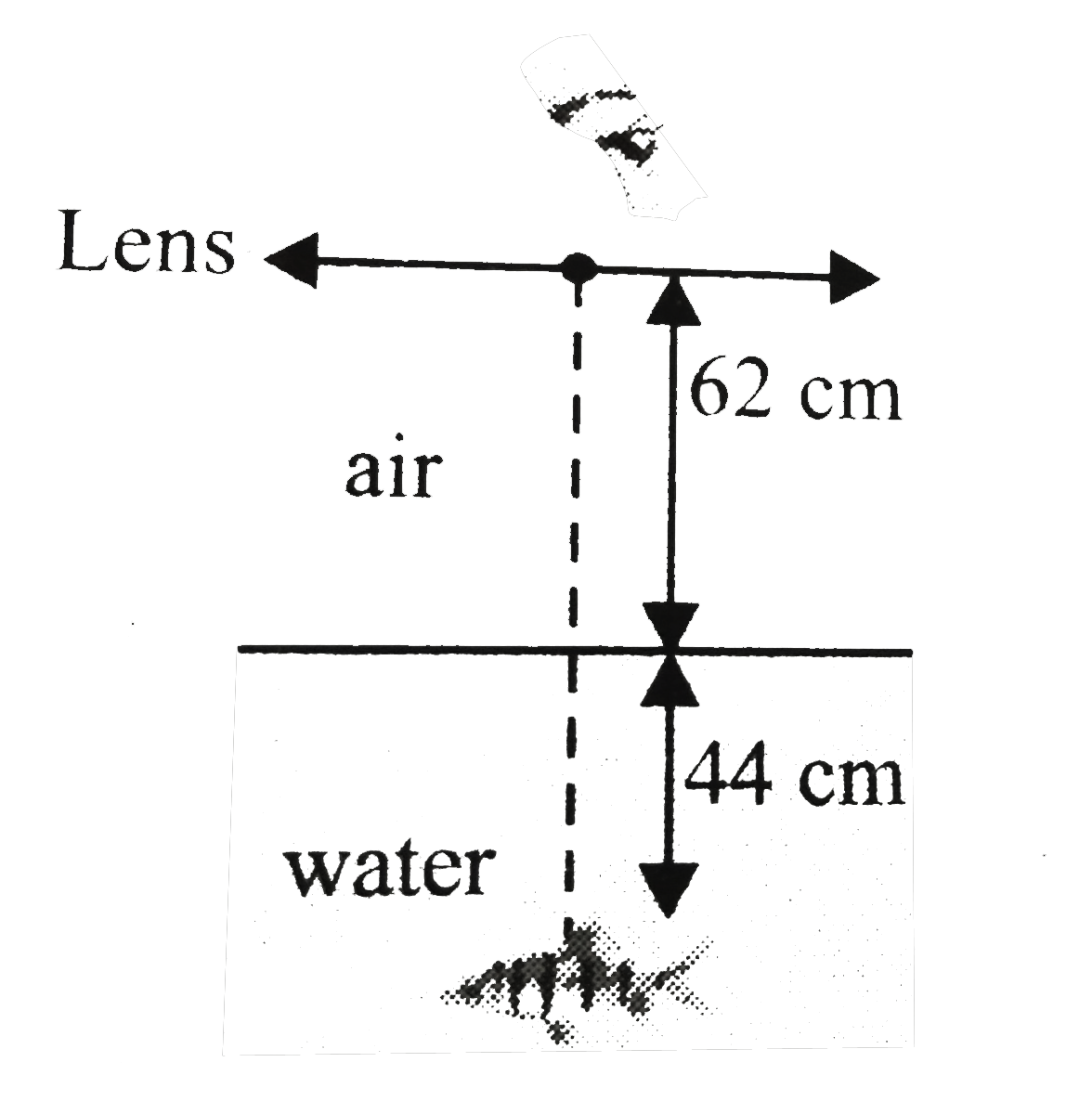 View Solution
View SolutionQuestion 141
The back wall of an aqaurium is a mirror that is 30 cm away from the fron wall. The sides to the tank are negligibly thin. A fish is swimming midway between the front and back walls.
a. An image of the fish appears behind the mirror. How far dows this image appear to be from the front wall of the aquarium?
b. Would the refractive index of the liquid have to be larger or smaller in order for the image of the fish to appear in front of the mirror, rather than behind it? Find the limiting value of this refractive index. Initially, water is there in aquarium having refractive index 4/3 View SolutionQuestion 142
An object is placed 20cm to the left of a converging lens having focal length 16cm. A second, identical lens is placed to the right of the first lens, such that the image formed by the combination is of the same size and orientation as the object is. Find the separation between the lenses. View SolutionQuestion 144
A parallel beam of light falls on the surface of a convex lens whose radius of curvature of both sides of 20cm. The refractive index of the material of the lens varies as μ=1.5+0.5r , where r is the distance of the point on the aperture from the optical centre in cm. Find the length of the region on the axis of the lens where the light will appear. The radius of aperture of the lens is 1cm. View SolutionQuestion 145
A thin biconvex lens of refractive index 3/2 and radius of curvature 50cm is placed on a reflecting convex surface of radius of curvature 100cm. A point object is placed on the principal axis of the system such that its final image coincides with itself. Now, few drops of a transparent liquid is placed between the mirror and lens such that final image of the object is at infinity. Find refractive index of the liquid used. Also, find the position of the object. View SolutionQuestion 146
A convex lens of focal length f1 is placed in front of a luminous point object. The separation between the object and the lens is 3f1 . A glass slab of thikness t is placed between the object and the lens. A real image of the object is formed at the shortest possible distance from the object.
a. Find the refractive index of the slab.
b. If a concave lens of very large focal length f2 is placed in contact with the convex lens, find the shifting of the image. View SolutionQuestion 147
A lens is made of three thin different mediums. Radius of curvature and refractive index of each medium is shown iin Figure., Surface AB is straight. An object is placed at some distance from the lens by which a real image is formed on the screen placed at a distance of 10cm from the lens. Find the distance of the object from the lens.
 View Solution
View SolutionQuestion 148
An equiconvex lens, f1=10cm, is placed 40 cm in front of a concave mirror, f2=7.50cm as shown in Figure ., An object 2 cm high is placed 20cm to the left of the lens . Find the position of the final image is formed when leftward travelling rays once again pass through the lens. Find overall magnification.
 View Solution
View SolutionQuestion 149
A biconvex lens, f1=20cm , is placed 5cm in front of a convex mirror, f2=15cm. An object of length 2 cm is placed at a distance 10cm from the lens.
Find the loaction and nature of the final image after the leftward travelling rays once again pass through the lens. Find overall magnification.
 View Solution
View SolutionQuestion 151
A stationary observer O looking at a fish (in water of μ=4/3 ) through a converging lens of focal length 90.0cm. the lens is allowed to falll freely from a height of 62.0cm with its axis vertical. The fish and the observer are on the principal axis of the lens. The fish moves up with constant velocity 100cms−1 . Initially, it was at a depth of 44.00cm. Finally the velocity with which the fish appears to move to the observer at t=0.2sec.
 View Solution
View SolutionQuestion 152
The bottom of glass beaker is made of a thin equiconvex lens having bottom side silver polished as shown in figure,. Now the water is filled in the baker upto a height of h=4m. The image of point object floating at middle point of beaker at the surface of water coincides with it. Find out the value of radius of curvature of lens. (.aμg=3/2,.aμw=4/3)
 View Solution
View SolutionQuestion 153
A thin convex lens of refractive index μ=1.5 is placed between a point source of Light S and a screen A, shown in figure,. Light rays from the source S are brought to focus on the screen A, forming a point image P. The distance SP is equal to 50cm. Water (μ=4/3) is now poured into a vessel interposed between the object and the lens, and it is observed that when the water level is 8cm the screen has to be moved up by a distance of 6cm in order to get a sharp image. Find the focal length of the lens.
 View Solution
View SolutionQuestion 154
A thin equi-convex glass lens (refractive index = 1.5) is being placed on the top of a vessel of height h = 20 cm as shown in the figure. A luminous point source is being placed at the bottom of the vessel on the principle axis of the lens. When air is on both sides of the lens, the image of luminous point source is found at a distance 20 cm from the lens outside the vessel. When the air inside the vessel is being replaced by a source is fomed at a distance 30 cm from the lens outside the vessel. The value of μ is
 View Solution
View SolutionQuestion 155
A point object is located at a distance of 100cm from a screen. A lens of focal length 23 cm mounted on a movable frictionless stad is kept between the source and the screen. The stand is attached to a spring of natureal length 50cm and spring constant 800N/m as shown in Figure . Mass of the stand with lens is 2 kg. How much impulse P should be imparted to the stand so that a real image of the object is formed on the screen after a fixed time gap? Also find this time gap. (Neglect width width of the stand)
 View Solution
View SolutionQuestion 157
A ray of light is incident on a medium with angle of incidence I and refracted into a second medium with angle of refraction r. The graph of sin(i)vssin(R) is as shown in figure. Then the velocity of light in the first medium in n times the velocity of light in the second medium. What shoul be th evalue of n?
 View Solution
View SolutionQuestion 159
You are given two identical plano-convex lenses. When you palce an object 20cm to the left of a single plano-convex lens, the image appears 40cm to the right of the lens. You then arrange the two plano-convex lenses back to back to form a double convex lens. If the object is 20cm to th eleft of this new lens, what is the approximate location of the image?
 View Solution
View SolutionQuestion 171
Two thin lenses are placed 5cm apart along the same axis and illuminted with a beam of light parallel to that axis. The first lens in the path of the beam is a converging lens of focal length 10cm whereas the second is a diverging lens of focal length 5cm. If the second lens if now moved toward the first, the emergent light View SolutionQuestion 173
A plastic hemisphere has a radius of curvature of 8cm and an index of refraction of 1.6. On the axis halfway between the plane surface and the spherical one (4cm from each) is a small object O.
The distance between the two images when viewed along the axis from the two sides of the hemisphere is approximately.
 View Solution
View SolutionQuestion 177
Light is incident normally on face AB of a prism as shown in Figure. A liquid of refractive index μ is placed on face AC of the prism. The prism is made of glass of refractive indes 3/2 . Find the limits of μ for which total internal reflection takes place on the face AC.
(A)μ>√32 (B)3√34>μ (C)μ>√3 (D)μ<√32 View Solution
View SolutionQuestion 181
Point object O is placed on the principal axis of a convex lens of focal length 20cm at a distance of 40 cm to the left of it. The diameter of the lens is 10cm to the right of the lens at a distance h below the principal axis, then the maximum value of h to see the image will beView SolutionQuestion 189
Consider the situation shown in figure. Water (μw=43) is filled in a breaker upto a height of 10 cm. A plane mirror is fixed at a height of 5 cm from the surface of water. Distance of image from the mirror after reflection from it if an object O at the bottom of the beaker is
 View Solution
View SolutionQuestion 195
A plano- convex lens fits exactly into a plano- concave lens. Their plane surfaces are parallel to each other. If lenses are made of different materials of refractive indices μ1 and μ2 and R is the radius of curvature of the curved curface of the lenses, then the focal length of the combination is View SolutionQuestion 211
A concave mirror is placed on a horizontal table with its axis directed vertically upward. Let O be the pole of the mirror C its center of curvature and F is the focus. A point object is placed at C. It has a real image, also located at C. If the mirror is now filled with water, the image will be View SolutionQuestion 213
A point source of light S, placed at a
distance L in front of the centre of a mirror of width d,
hangs vertically on a wall. A man walks in front of the
mirror along a line parallel to th mirror at a distane
2L form it as shown.The greatest distance over which
he can see the image of the light source in the mirror is
(a) d/2 (b) d (c) 2d (d) 3 d.
 View Solution
View SolutionQuestion 219
A piece of wire bent into an L shape with upright and horizontal portion of equal lengths 10 cm each is placed with the horizontal portion along the axis of the concave mirror towards pole of mirror whose radius of curvature is 10 cm. If the bend is 20 cm from the pole of the mirror, then the ratio of the lengths of the images of the upright and horizontal portion of the wire is View SolutionQuestion 222
If a ray of light in a denser medium strikes a rarer medium at an angle of incidence i, the angles of reflection and refraction are respectively, r and r' If the reflected and refraction rays are at right angles to each other, the critical angle for the given pair of media isView SolutionQuestion 225
A ray of monochromatic light is incident on the refracting face of a prism (angle 75∘0 . It passes through the prism and is incident on the other face at the critical angle. If the refractive index of the prism is √2 , then the angle of incidence on the first of the prism is View SolutionQuestion 226
An object is placed at a distance of 15 cm from a convex lens of focal length 10 cm. On the other side of the lens, a convex mirror is placed at its focus such that the image formed by the combination coincides with the object itself. The focal length of the convex mirror is
 View Solution
View SolutionQuestion 229
A parallel beam of light falls axially on a thin converging lens of focal length 20cm. The emergent light falls on a screen placed 30cm beyond the lens. An opaque plate with a triangular aperture, side 1 cm, is in contact with the lens
Which one of the following diagrams best shows to appearance of the patch of light seen on the screen?
 View Solution
View SolutionQuestion 231
Figure(a) shows two plano-convex lenses in contact as shown. The combination has focal length 24cm. Figure (b) shows the same with a liquid introduced between them. If refractive index of glass of the lenses is 1.50 and that of the liquid is 1.60, the focal length of system in figure (b) will be
 View Solution
View SolutionQuestion 239
An object is placed in front of a convex mirror at a distance of 50cm. A plane mirror is introduced covering the lower half of the convex mirror. If the distance between the object and the plane mirror is 30cm, it is found that there is no parallax between the images formed by the two mirrors. What is the radius of curvature of the convex mirror? View SolutionQuestion 240
A concave mirror of focal length 10cm and a convex mirror of focal length 15cm are placed facing each other 40cm apart. A point object is placed between the mirrors, on their common axis and 15cm from the concave mirror. Find the position and nature of the image produced by successive reflections, first at the concave mirror and then at the convex mirror. View SolutionQuestion 245
Two thin symmetrical lenses of different nature and of different material have equal radii of curvature R=15cm. The lenses are put close together and immersed in water (μw=43). The focal length of the system in water is 30 cm. The difference between refractive indices of the two lenses is View SolutionQuestion 248
A tranparent sphere of radius 20cm and refractive index 1.6 is fixed in a hole of the partition separating the two media: A(refractive index n1=1.2) and B ( refractive index n3=1.7). A luminous point object is placed 120cm from the surface of the sphere iin medium A. it is viewed from D in medium B in a direction normal to the sphere. Find the position of the image formed by the rays, from point N.
 View Solution
View SolutionQuestion 259
A linear object AB is placed along the axis of a concave mirror. This object is moving towards the mirror with speed U. The speed of the image of the point A is 4U and the speed of the image of B is alSO 4U btu in opposite direction. If the center of the line AB is at a distance L from the mirror then find out the length of the object.
 View Solution
View SolutionQuestion 260
A mango tree is at the bank of a river and one of the branch of tree extends over the river. A tortoise lives in the river. A mango falls just ono the tortoise. The acceleration of the mango falling from tree as it appears to the tortoise is (refractive index of water is 4/3 and the tortoise is stationary)View SolutionQuestion 269
In a thick glass slab of thicknes l, and refractive index n1, a cuboidal cavity of thickness 'm' is carved as shown in figure, and is filled with a liquid of R.I.n2(n1>n2). The ratio l/m, so that shift produced by this slab is zero when an observer A observes an object B with paraxial rays is
 View Solution
View SolutionQuestion 270
In Figure, a point object O is placed in air. A spherical boundary separates two media. Ab is the principall axis. The refractive index above AB is 1.6 and below AB is 2.0. The separation between the images formed due to refraction at a the spherical surface is (assume the radius of curvature (R) to be 1 unit)
 View Solution
View SolutionQuestion 272
A point object is kept in front of a plane mirror. The plane mirror is doing SHM of ampliture 2cm. The plane mirror moves along the x-axis which is normal to the mirror. The amplitude of the mirror is such that the object is always in front of the mirror. The amplitude of SHM of the image is View SolutionQuestion 274
A partical revolves in clockwise direction (as seen from point A) in a circle C of radius 1 cm and completes one revolution in 2 sec. The axis of the circle and the principal axis of the mirror M coincides, call it AB. The radius of curvature of the mirror of 20cm. Then, the direction of revolution (as seen from A) of the image of the partical and its speed is
 View Solution
View SolutionQuestion 298
An object kept on the principal axis and infront of a spherical mirror, is moved along the axis itself. Its lateral magnification m is measured, and plotted versus object distance |u| for a range of u, as shown in figure. The magnification of the object when it is placed at a distance 20cm in front of the mirror is
 View Solution
View SolutionQuestion 299
A lens of focal length 20.0 cm and aperture radius 2.0cm is placed at a distance 30.cm from a point source of light. On the other side a screen is placed at a distance 50.0cm from the lens. The radius of spot of light formed on screen is (neglect spherical abberation through lens)View SolutionQuestion 305
A converging beam of rays is incident on a diverging lens. Having passed through the lens the rays intersect at a point 15cm from the lens. If the lens is removed, the point where the rays meet, move 5cm closer to the mounting that holds the lens. Find the focal length of the lens. View SolutionQuestion 310
An equiconcave diverging lens of focal length F is cut into two equal halves. The two halves are turned around and joined with some liquid between them.The lens obtained is converging with focal length F. If the refractive index of the liquid is 3 then what is the refractive index of the lens?
 View Solution
View SolutionQuestion 311
In a optics experiment, with the positive of the object fixed, a student varies the positive of a convex lens and for each positive, the screen is adjusted to get a clear image of the object. A graph between the object distance u and the image distance v, from the lens, is plotted using the same scale for the two axes. A straight line passing through the origin and making an angle of 45∘ with the x-axis meets the experimental curve at P. The coordinates of P will beView SolutionQuestion 317
A concave mirror of radius of curvature h is placed at the bottom of a tank containing a liquid of refractive index μ upto a depth d. An object P is placed at height h above the bottom of the miror. Outside the liquid, an observer O views the object and its image in the mirror. The apparent distance between these two will be
 View Solution
View SolutionQuestion 318
A cylindrical vessel of diameter 12 cm contains 800π cm3of water. A cylindrical glass piece of diameter 8.0 cm and height 8.0 cm is placed in the vessel. If the bottom of the vessel under the glass piece is seen by the paraxial rays (see figure 18-E6), locate its image. The index of refraction of glass is 1.50 and that of water is 1.33.
 View Solution
View SolutionQuestion 319
When the sun is either rising or setting and appears to be just in the horizon, it is in fact below the horizon. The explanation for this seeming paradox is that light from the sun bends slightly when entering the earth's atmosphere as shown in figure. Assume that the atmosphere has uniform density and hence uniform index of refraction n and extends to a height h above the earth's surface, at which point is abruptly stop. The angle δ above the Sun's true position is given by
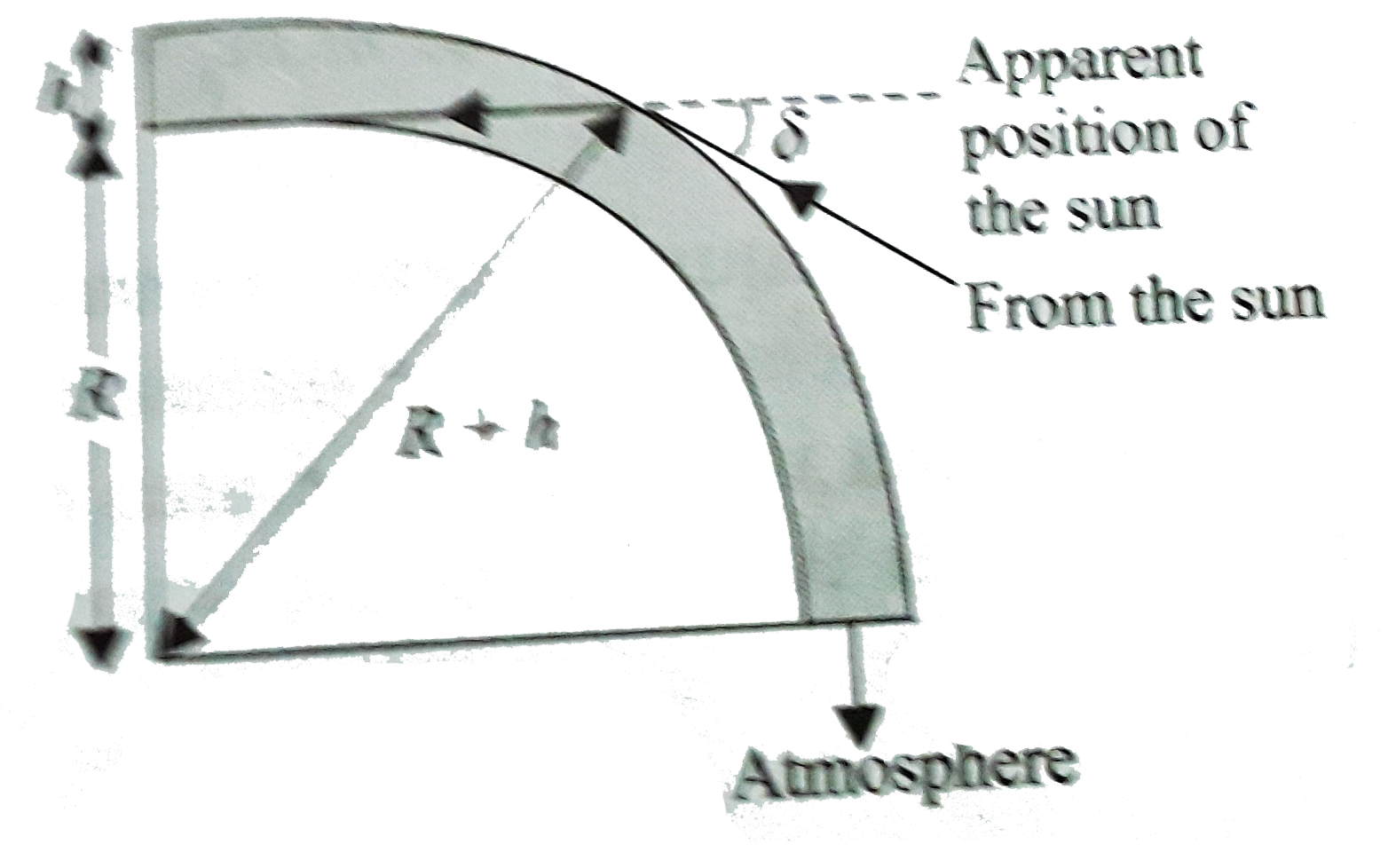 View Solution
View SolutionQuestion 321
When an object is placed on the principal axis of a convex lens at two different positins, it produces the images with magnifications +2 and −4 respectively. How many times more away from the lens the image will be formed in the second position as compared to the first postion?View SolutionQuestion 324
An object is placed at f/2 away from first focus of a convex lens where f is the focal length of the lens. Its image is formed at a distance 3f/2 in a slab of refractive index 3/2 , from the face of the slab facing the lens. Find the distance of this face of the slab from the second focus of the lens.
 View Solution
View SolutionQuestion 325
A fish in a lake (refractive index 4/3 for water ) is viewed through a convex lens. From water surface, the lens is placed in air at half of the distance of the fish from the water surface, so that the image is formed at the fish itself. The focal length of the lens is how many times the depth of fish in water? View SolutionQuestion 332
A lense of focal length f is placed in between an object and screen at a distance D. The lens forms two real images of object on the screen for two of its different positions, a distance x apart. The two real images have magnification m1andm2 respectively (m1>m2). Choose the correct statement(s).View SolutionQuestion 344
A real point source is 5cm away from a plane mirror whose reflectinig ability is 50% , while the eye of an observer (pupil diameter 5mm) is 10cm away form the mirror. Asuume that both source and eye are on the same line perpendicular to the surface and refracted rays have no effect on intensity. Then, View SolutionQuestion 345
A plane mirror M is arranged parallel to a wall W at a distance l from it. The light produced by a point source S kept on the wall is reflected by the mirror and produces a patch of light on the wall. The mirroo moves with velocity v towards the wall.
Which of the following statement(s) is/are correct?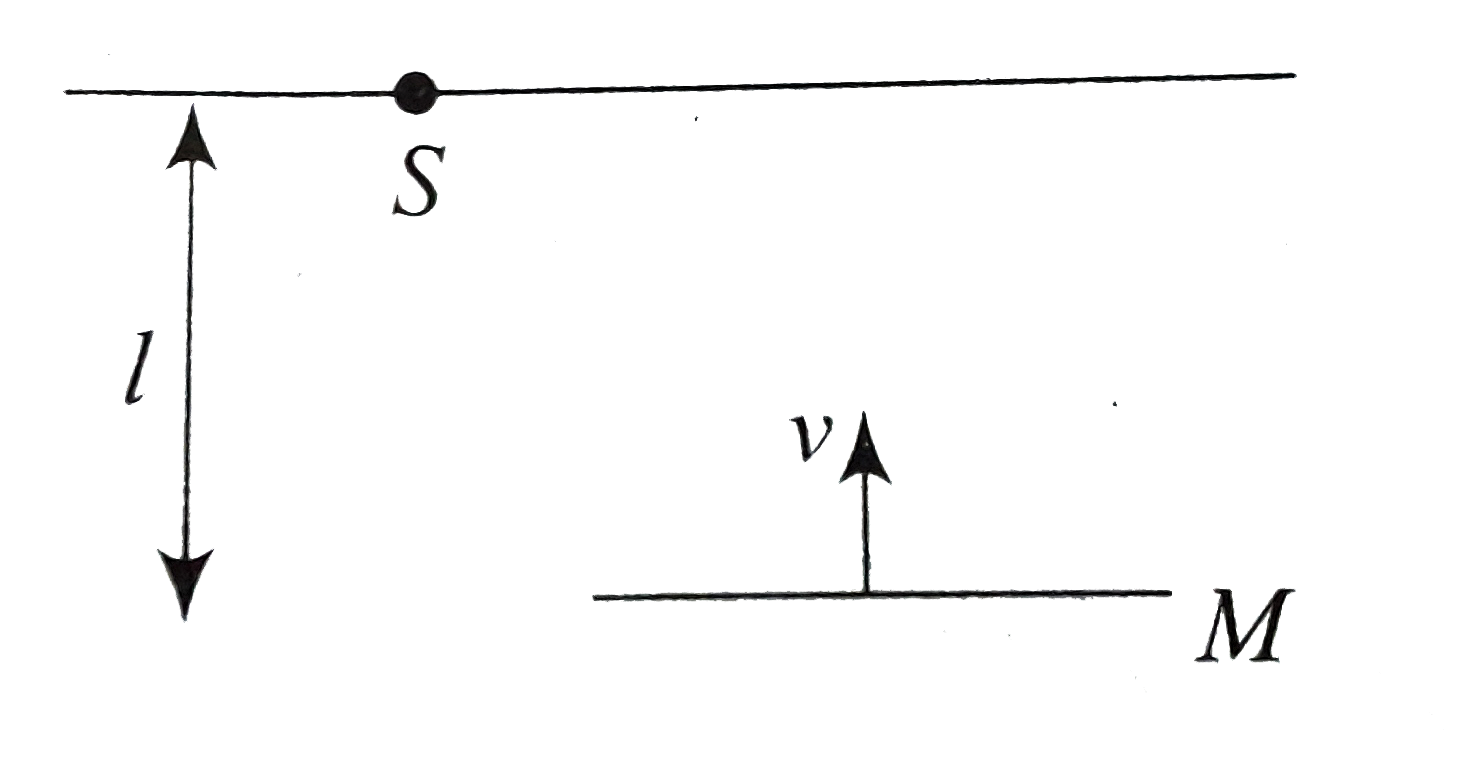 View Solution
View SolutionQuestion 350
A fish F, in the pond is at a depth of 0.8m from the water surface and is moving vertically upward with velocity 2ms−1. At the same instant, a bird B is at a height of 6m from the water surface and is moving downward with velocity 3ms−1. At this instant. both are on the same vertical line as shown in figure . Which of the following statements are correct?
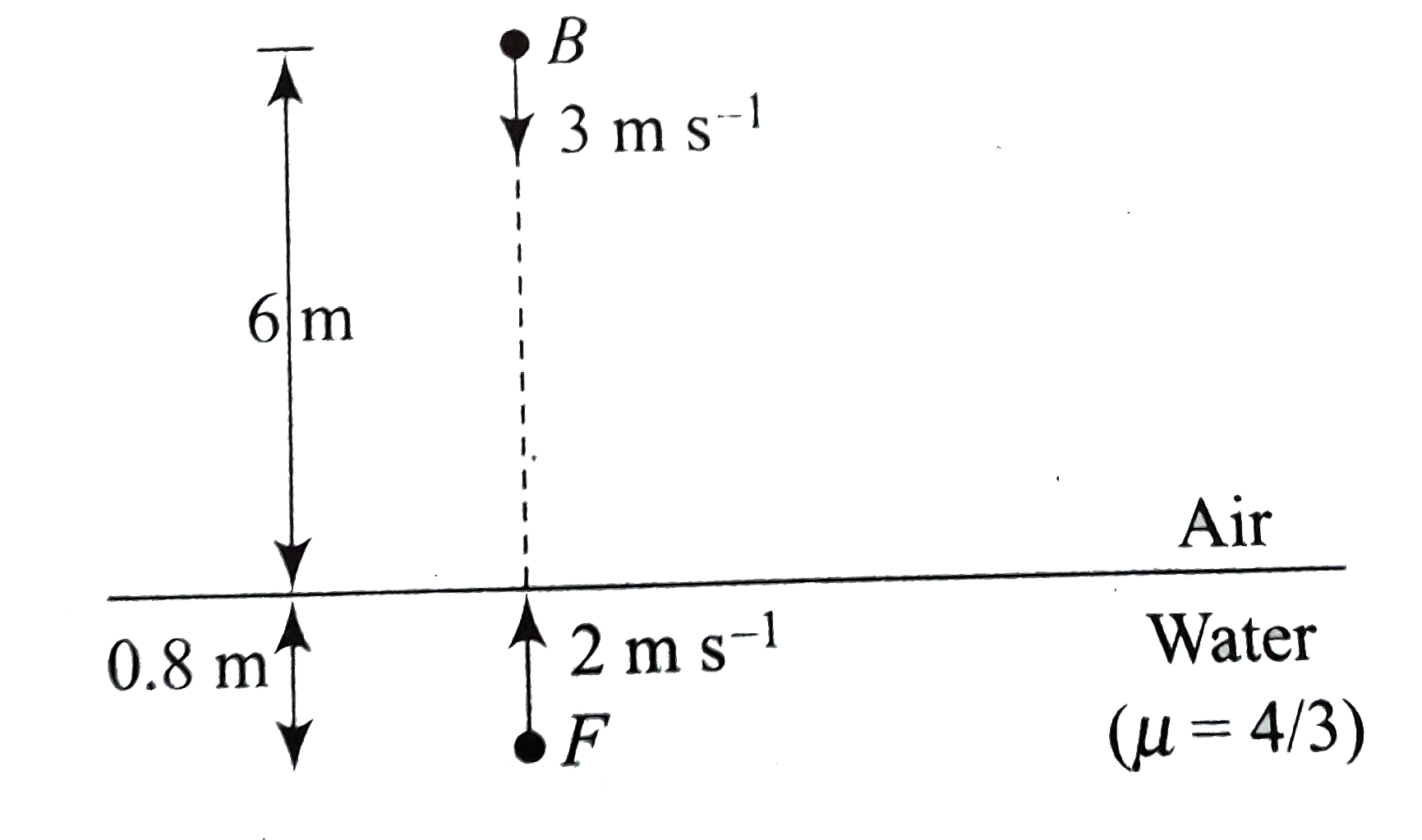 View Solution
View SolutionQuestion 353
An object is placed in front of a converging lens at a distance equal to twice the focal length f1 of the lens. On the other side of the lens is a concave mirror of focal length f2 separated from the lens is a concave mirror of focal length f2 separated from the lens by a distance 2(f1+f2). Light from the object passes rightward through the lens, reflects from the mirror, passes leftward throught the lens, and forms a final image of the object.
 View Solution
View SolutionQuestion 366
A linear object of size 1.5cm is placed at 10 cm from a lens of focal length 20 cm. The optic centre of lens and the object are displaced are displaced a distance Δ. Thed magnification of the image formed is m. (Take optic centre of origin). The coordinates of image of A and B are (x1,y1) and (x2,y2) respectively then
 View Solution
View SolutionQuestion 368
Statement I: A beam of white light enters the curved surface of a semicircular piece of glass along the normal. The imcoming beam is moved clockwise (so that the angle θ increases), such that the beam always enters along th enormal to the curved side. Just before the refracted beam disappears, it becomes predominantly red.
Statement II: The index of refraction for light at the red end of the visible spectrum is more than at the violet end.
 View Solution
View SolutionQuestion 369
Statement I: A ray is incident from outside on a glass sphere surrounded by air as shown in Figure. This ray may suffer total internal reflection at the second interface.

Statement II: For a ray going from a denser to rarer medium, the ray may suffer total internal reflection. View SolutionQuestion 379
Consider a transparent hemispher (n=2) in front of which a small object is placed in air (n=1) as shown in figure.
Q. Consider a ray starting from O which strikes the spherical surface at grazing incident (i=90∘). Takin x=R, what will be the angle (from normal) at which the ray may emerge from the plane surface. View SolutionQuestion 380
This question concerna a symmetrical lens shown, along with its two focal points. It is made of plastice with n=1.2 and has focal length f. Four different regions are shown:
Here,
A. −∞x<−f B. −f<x<0
C. 0<x<f D. f<x<∞

Q. If incident rays are converging, then in which region does the image appear?View SolutionQuestion 381
This question concerna a symmetrical lens shown, along with its two focal points. It is made of plastice with n=1.2 and has focal length f. Four different regions are shown:
Here,
A. −∞x<−f B. −f<x<0
C. 0<x<f D. f<x<∞

Q. If incident rays are converging, then in which region does the image appear?View SolutionQuestion 382
This question concerns a symmetrical lens shown, along with its two focal points. It is made of plastic with n=1.2 and has focal length f. Four different regions are shown:
A. −∞<x<−f
B. −f<x<0
C. 0<x<f
D. f<x<∞
A second lens is now placed adjacent to the first in contact with it. The new lens is concave, with a focal length f=−3f. In what region does the focal length of the two-lens system lie? Treat the lenses as thin.
 View Solution
View SolutionQuestion 387
A thin equiconvex lens of refractive index 3/2 is placed on a horizontal plane mirror as shown in figure. The space between the lens and the mirror is filled with a liquid of refractive index 4/3 . It is found that when a point object is placed 15 cm above the lens on its priincipal axis, the object coincides with its own image.

Q. The radius of curvature of the convex surface is View SolutionQuestion 388
A thin biconvex lens of refractive index 3/2 is placed on a horizontal plane mirror as shown in Figure . The space between the lens and the mirror is then fille with water or refractive index 4/3. It is found that when a point object is placed 15 cm above the lens on its principal axis, the object coincides with its own image. On representing with another liquid, the object and the image again coincide at a distance 25 cm from the lens. Calculate the refractive index of the liquid.
 View Solution
View SolutionQuestion 389

A point object is placed at a distance of 0.3 m from a convex lens (focal length 0.2 m) cut into two halves each of which is displaced by 0.0005 m as shown in the figure. Find the position of the image . If more than one image is formed find their number and the distance between them.View SolutionQuestion 390

A point object is placed at a distance of 0.3 m from a convex lens (focal length 0.2 m) cut into two halves each of which is displaced by 0.0005 m as shown in the figure. Find the position of the image . If more than one image is formed find their number and the distance between them.View SolutionQuestion 391

A point object is placed at a distance of 0.3 m from a convex lens (focal length 0.2 m) cut into two halves each of which is displaced by 0.0005 m as shown in the figure. Find the position of the image . If more than one image is formed find their number and the distance between them.View SolutionQuestion 392
The convex surface of a thin concave-convex lens of glass of refractive index 1.5 has a radius of curvature 20 cm. The concave surface has a radius of curvature 60 cm. The convex side is silvered and placed on a horizontal surface as shown in figure. (a) Where should a pin be placed on the axis so that its image is formed at the same place ? (b) If the concave part is filled with water (mu = 4/3), find the distance through which the pin should be moved so that the image of the pin again coincides with the pin.
 View Solution
View SolutionQuestion 393
The convex surface of a thin concave-convex lens of glass of refractive index 1.5 has a radius of curvature 20 cm. The concave surface has a radius of curvature 60 cm. The convex side is silvered and placed on a horizontal surface as shown in figure. (a) Where should a pin be placed on the axis so that its image is formed at the same place ? (b) If the concave part is filled with water (mu = 4/3), find the distance through which the pin should be moved so that the image of the pin again coincides with the pin.
 View Solution
View SolutionQuestion 394
Two thin convex lenses of focal lengths f1 and f2 are separated by a horizontal distance d (whered<f1,d<f2) and their centres are displaced by a vertical separation △ as shown in the fig.
Taking the origin of coordinates O, at the centre of the first lens the x and y coordinates of the focal point of this lens system, for a parallel beam of rays coming form the left, are given by:
 View Solution
View SolutionQuestion 395
Two thin convex lenses of focal lengths f1 and f2 are separated by a horizontal distance d (whered<f1,d<f2) and their centres are displaced by a vertical separation △ as shown in the fig.
Taking the origin of coordinates O, at the centre of the first lens the x and y coordinates of the focal point of this lens system, for a parallel beam of rays coming form the left, are given by:
 View Solution
View SolutionQuestion 396
A parallel beam of light falls successively on a thin convex lens of focal length 40 cm and then ono a thin convex lens of focal length 10cm as shown in figure.
In figure, the second lens is an equi-concave lens of focal length 10cm and made of a material of refractive index 1.5. In both the cases, the second lens has an aperture equal to 1cm.

Q. Compare the area illuminated by the beam of light on the screen, which passes through the second lens in the two cases. The ratio (A2/A1) will be View SolutionQuestion 397
A parallel beam of light falls successively on a thin convex lens of focal length 40 cm and then ono a thini convex lens of focal length 10cm as shown in figure.
In figure, the second lens is an equiconcave lens of focal length 10cm and made of a material of refractive index 1.5. In both the cases, the second lens has an aperture equal to 1cm.

Q. Now, a liquid of refractive index μ is filled to the right of the second lens in case B such that the area illuminated in both the cases is the same. Determing the refractive index of the liquid. View SolutionQuestion 399
Two identical plano-convex lenses L1(μ1−1.4) and L2(μ2−1.5) of radii of curvature R=20cm are placed as shown in Figure.

Q. Now, the secocnd lens is shifted vertically downward by a small distance 4.5mm and the extended parts of L1 and L2 are blackened as shown in figure. Find the new position of the image of the parallel beam.
 View Solution
View SolutionQuestion 405
The ciliary muscles of eye control the curvature of the lens in the eye and hence can alter the effective focal length of the system. When the muscles are fully relaxed, the focal length is maximum. When the muscles are strained, the curvature of lens increases. That means radius of curvature decreases and focal length decreases. For a clear vision, the image must be on the retina. The image distance is therefore fixed for clear vision and it equals the distance of retina from eye lens. It is about 2.5cm for a grown up person.
A perosn can theoretically have clear vision of an object situated at any large distance from the eye. The smallest distance at which a person can clearly see is related to minimum possible focal length. The ciliary muscles are most strained in this position. For an average grown up person, minimum distance of the object should be around 25cm.
A person suffering from eye defects uses spectacles (eye glass). The function of lens of spectacles is to form the image of the objects within the range in which the person can see clearly. The image o the spectacle lens becomes object for the eye lens and whose image is formed on the retina.
The number of spectacle lens used for th eremedy of eye defect is decided by the power fo the lens required and the number of spectacle lens is equal to the numerical value of the power of lens with sign. For example, if power of the lens required is +3D (converging lens of focal length 100/3cm ), then number of lens will be +3.
For all the calculations required, you can use the lens formula and lensmaker's formula. Assume that the eye lens is equiconvex lens. Neglect the distance between the eye lens and the spectacle lens.

Q. Minimum focal length of eye lens of a normal peson is View SolutionQuestion 406
The ciliary muscles of eye control the curvature of the lens in the eye and hence can alter the effective focal length of the system. When the muscles are fully relaxed, the focal length is maximum. When the muscles are strained, the curvature of lens increases. That means radius of curvature decreases and focal length decreases. For a clear vision, the image must be on the retina. The image distance is therefore fixed for clear vision and it equals the distance of retina from eye lens. It is about 2.5cm for a grown up person.
A perosn can theoretically have clear vision of an object situated at any large distance from the eye. The smallest distance at which a person can clearly see is related to minimum possible focal length. The ciliary muscles are most strained in this position. For an average grown up person, minimum distance of the object should be around 25cm.
A person suffering from eye defects uses spectacles (eye glass). The function of lens of spectacles is to form the image of the objects within the range in which the person can see clearly. The image o the spectacle lens becomes object for the eye lens and whose image is formed on the retina.
The number of spectacle lens used for th eremedy of eye defect is decided by the power fo the lens required and the number of spectacle lens is equal to the numerical value of the power of lens with sign. For example, if power of the lens required is +3D (converging lens of focal length 100/3cm ), then number of lens will be +3.
For all the calculations required, you can use the lens formula and lensmaker's formula. Assume that the eye lens is equiconvex lens. Neglect the distance between the eye lens and the spectacle lens.
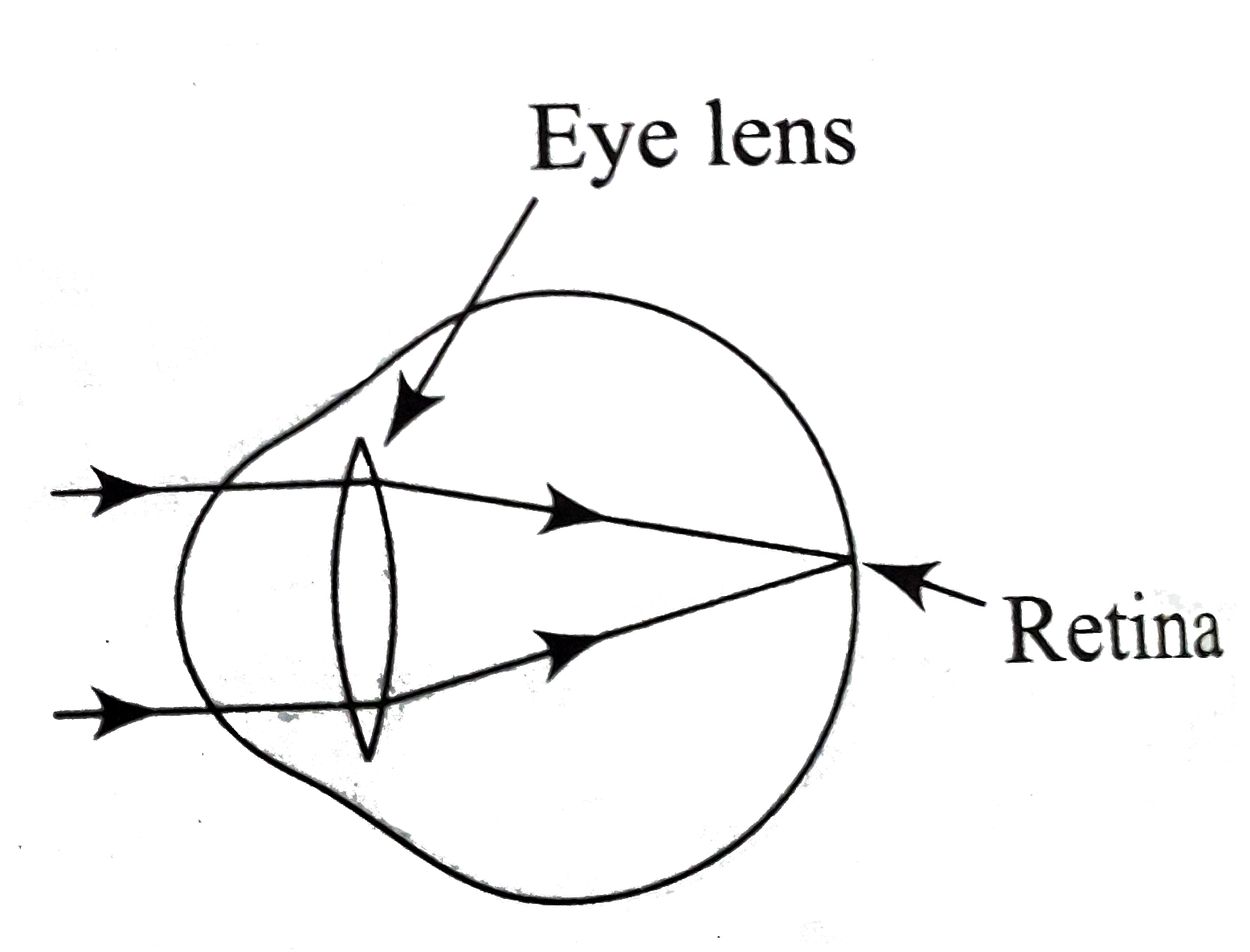
Q. Maximum focal length of a eye lens of a normal person is View SolutionQuestion 407
The ciliary muscles of eye control the curvature of the lens in the eye and hence can alter the effective focal length of the system. When the muscles are fully relaxed, the focal length is maximum. When the muscles are strained, the curvature of lens increases. That means radius of curvature decreases and focal length decreases. For a clear vision, the image must be on the retina. The image distance is therefore fixed for clear vision and it equals the distance of retina from eye lens. It is about 2.5cm for a grown up person.
A perosn can theoretically have clear vision of an object situated at any large distance from the eye. The smallest distance at which a person can clearly see is related to minimum possible focal length. The ciliary muscles are most strained in this position. For an average grown up person, minimum distance of the object should be around 25cm.
A person suffering from eye defects uses spectacles (eye glass). The function of lens of spectacles is to form the image of the objects within the range in which the person can see clearly. The image o the spectacle lens becomes object for the eye lens and whose image is formed on the retina.
The number of spectacle lens used for th eremedy of eye defect is decided by the power fo the lens required and the number of spectacle lens is equal to the numerical value of the power of lens with sign. For example, if power of the lens required is +3D (converging lens of focal length 100/3cm ), then number of lens will be +3.
For all the calculations required, you can use the lens formula and lensmaker's formula. Assume that the eye lens is equiconvex lens. Neglect the distance between the eye lens and the spectacle lens.

Q. A near sighted man can clearly see ojects only upto a distance of 100cm and not beyond this. The number of the spectacle lenses necessary for the remedy of this defect will be View SolutionQuestion 408
The ciliary muscles of eye control the curvature of the lens in the eye and hence can alter the effective focal length of the system. When the muscles are fully relaxed, the focal length is maximum. When the muscles are strained, the curvature of lens increases. That means radius of curvature decreases and focal length decreases. For a clear vision, the image must be on the retina. The image distance is therefore fixed for clear vision and it equals the distance of retina from eye lens. It is about 2.5cm for a grown up person.
A perosn can theoretically have clear vision of an object situated at any large distance from the eye. The smallest distance at which a person can clearly see is related to minimum possible focal length. The ciliary muscles are most strained in this position. For an average grown up person, minimum distance of the object should be around 25cm.
A person suffering from eye defects uses spectacles (eye glass). The function of lens of spectacles is to form the image of the objects within the range in which the person can see clearly. The image o the spectacle lens becomes object for the eye lens and whose image is formed on the retina.
The number of spectacle lens used for th eremedy of eye defect is decided by the power fo the lens required and the number of spectacle lens is equal to the numerical value of the power of lens with sign. For example, if power of the lens required is +3D (converging lens of focal length 100/3cm ), then number of lens will be +3.
For all the calculations required, you can use the lens formula and lensmaker's formula. Assume that the eye lens is equiconvex lens. Neglect the distance between the eye lens and the spectacle lens.

Q. A far sighted man connot see objects clearly unless they are at least 100cm from his eyes. The number of the spectacle lenses that will make his range of clear vision equal to an average grown up person will beView SolutionQuestion 409
The ciliary muscles of eye control the curvature of the lens in the eye and hence can alter the effective focal length of the system. When the muscles are fully relaxed, the focal length is maximum. When the muscles are strained, the curvature of lens increases. That means radius of curvature decreases and focal length decreases. For a clear vision, the image must be on the retina. The image distance is therefore fixed for clear vision and it equals the distance of retina from eye lens. It is about 2.5cm for a grown up person.
A perosn can theoretically have clear vision of an object situated at any large distance from the eye. The smallest distance at which a person can clearly see is related to minimum possible focal length. The ciliary muscles are most strained in this position. For an average grown up person, minimum distance of the object should be around 25cm.
A person suffering from eye defects uses spectacles (eye glass). The function of lens of spectacles is to form the image of the objects within the range in which the person can see clearly. The image o the spectacle lens becomes object for the eye lens and whose image is formed on the retina.
The number of spectacle lens used for th eremedy of eye defect is decided by the power fo the lens required and the number of spectacle lens is equal to the numerical value of the power of lens with sign. For example, if power of the lens required is +3D (converging lens of focal length 100/3cm ), then number of lens will be +3.
For all the calculations required, you can use the lens formula and lensmaker's formula. Assume that the eye lens is equiconvex lens. Neglect the distance between the eye lens and the spectacle lens.

Q. A person can see objects clearly from distance 10cm to ∞. Then, we can say that the person isView SolutionQuestion 413
Pulfrich refractometer is used to measure the refractive index of solids and liquid. It consist of right angled prism. A having its two faces perfectly plane. One of the face is horizontal and the other is vertical as shown is figure. The solid B whose refractive index is to be determined is taken having two faces cut perpendicular to one another. Light is incident in a direction parallel to the horizontal surface so that the light entering the prism A is at critical angle C. Finally, it emerges from the prism at an angle i. Let the refractive index of the solid be μ and that of the prism A be μ0 (which is known). Here μ0>μ and by measuring i, μ can be determinged.

Q. Refractive index of the solid (μ) in terms of μ0 and i is View SolutionQuestion 414
Pulfrich refractometer is used to measure the refractive index of solids and liquid. It consist of right angled prism. A having its two faces perfectly plane. One of the face is horizontal and the other is vertical as shown is figure. The solid B whose refractive index is to be determined is taken having two faces cut perpendicular to one another. Light is incident in a direction parallel to the horizontal surface so that the light entering the prism A is at critical angle C. Finally, it emerges from the prism at an angle i. Let the refractive index of the solid be μ and that of the prism A be μ0 (which is known). Here μ0>μ and by measuring i, μ can be determinged.

Q. Refractive index of the solid (μ) in terms of μ0 and i is View SolutionQuestion 415
Pulfrich refractometer is used to measure the refractive index of solids and liquid. It consist of right angled prism. A having its two faces perfectly plane. One of the face is horizontal and the other is vertical as shown is figure. The solid B whose refractive index is to be determined is taken having two faces cut perpendicular to one another. Light is incident in a direction parallel to the horizontal surface so that the light entering the prism A is at critical angle C. Finally, it emerges from the prism at an angle i. Let the refractive index of the solid be μ and that of the prism A be μ0 (which is known). Here μ0>μ and by measuring i, μ can be determinged.

Q. Refractive index of the solid (μ) in terms of μ0 and i is View SolutionQuestion 419
An object kept near a convex lens of focal length f, executes SHM between P and Q according to the equation y=Asinωt, O being the mean position. Take x-axis as the principal axis of the lens and A<<D to answer the following questions:

Q. The phase difference between the object and the image oscillations is View SolutionQuestion 420
An object kept near a convex lens of focal length f, executes SHM between P and Q according to the equation y=Asinωt, O being the mean position. Take x-axis as the principal axis of the lens and A<<D to answer the following questions:

Q. The amplitude of oscillation of the image is View SolutionQuestion 421
An object kept near a convex lens of focal length f, executes SHM between P and Q according to the equation y=Asinωt, O being the mean position. Take x-axis as the principal axis of the lens and A<<D to answer the following questions:

Q. The velocity of the image when the object crosses the mean position and goes toward Q isView SolutionQuestion 423
A convex lens of focal length 40cm is held at a distance 12cm coaxially above a concave mirror of focale length 18cm.

Q. If the convex lens is replaced by a glass plate of thickness 6cm, refractive index μ=32 and gives rise to an image coincident with itself, then the value of d is equal to
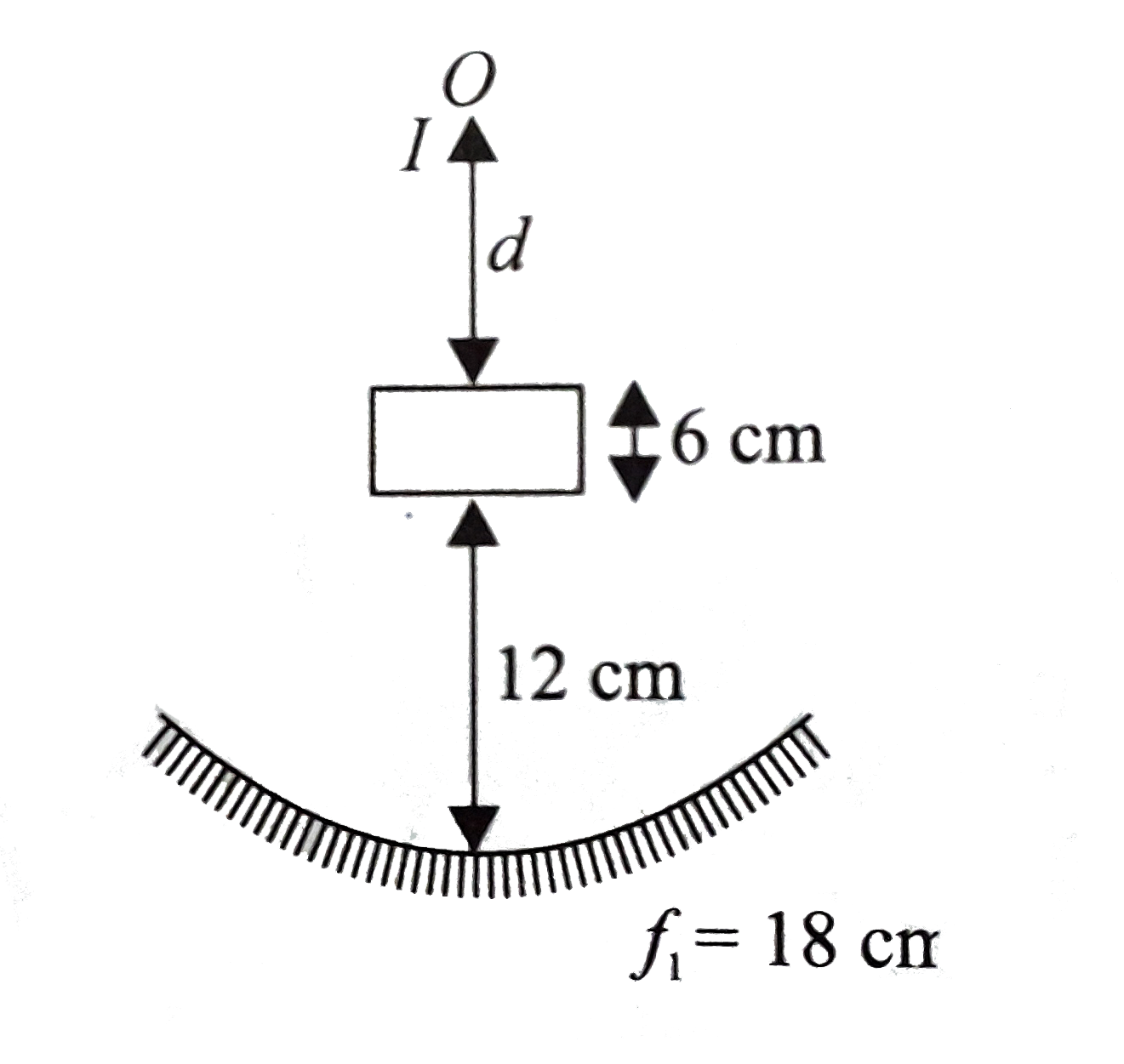 View Solution
View SolutionQuestion 424
A convex lens of focal length 40cm is held at a distance 12cm coaxially above a concave mirror of focale length 18cm.

Q. If the convex lens is replaced by a glass plate of thickness 6cm, refractive index μ=32 and gives rise to an image coincident with itself, then the value of d is equal to
 View Solution
View SolutionQuestion 425
A concave mirror forms real image of a point source lying on the optical axis at a distance of 50cm from the mirror. The focal length of the mirror is 25cm. The mirror is cut in two, and its halves are drawn at a distance of 1 cm apart in a direction perpendicular to the optical axis.

Q. The distance between the two images formed by the two halves of the mirror is View SolutionQuestion 426
A concave mirror forms real image of a point source lying on the optical axis at a distance of 50cm from the mirror. The focal length of the mirror is 25cm. The mirror is cut in two, and its halves are drawn at a distance of 1 cm apart in a direction perpendicular to the optical axis.

Q. Two statements are provided. Choose which is true and which is false.
Statement I: Image formed by half cut mirror has just half the intensity as that of the intensity of image formed by complete mirror.
Statement II: More the lateral separation between the two halves of the mirror, less will be the separation between the two images, as show in the given situation. View SolutionQuestion 427
A concave mirror forms real image of a point source lying on the optical axis at a distance of 50cm from the mirror. The focal length of the mirror is 25cm. The mirror is cut in two, and its halves are drawn at a distance of 1 cm apart in a direction perpendicular to the optical axis.
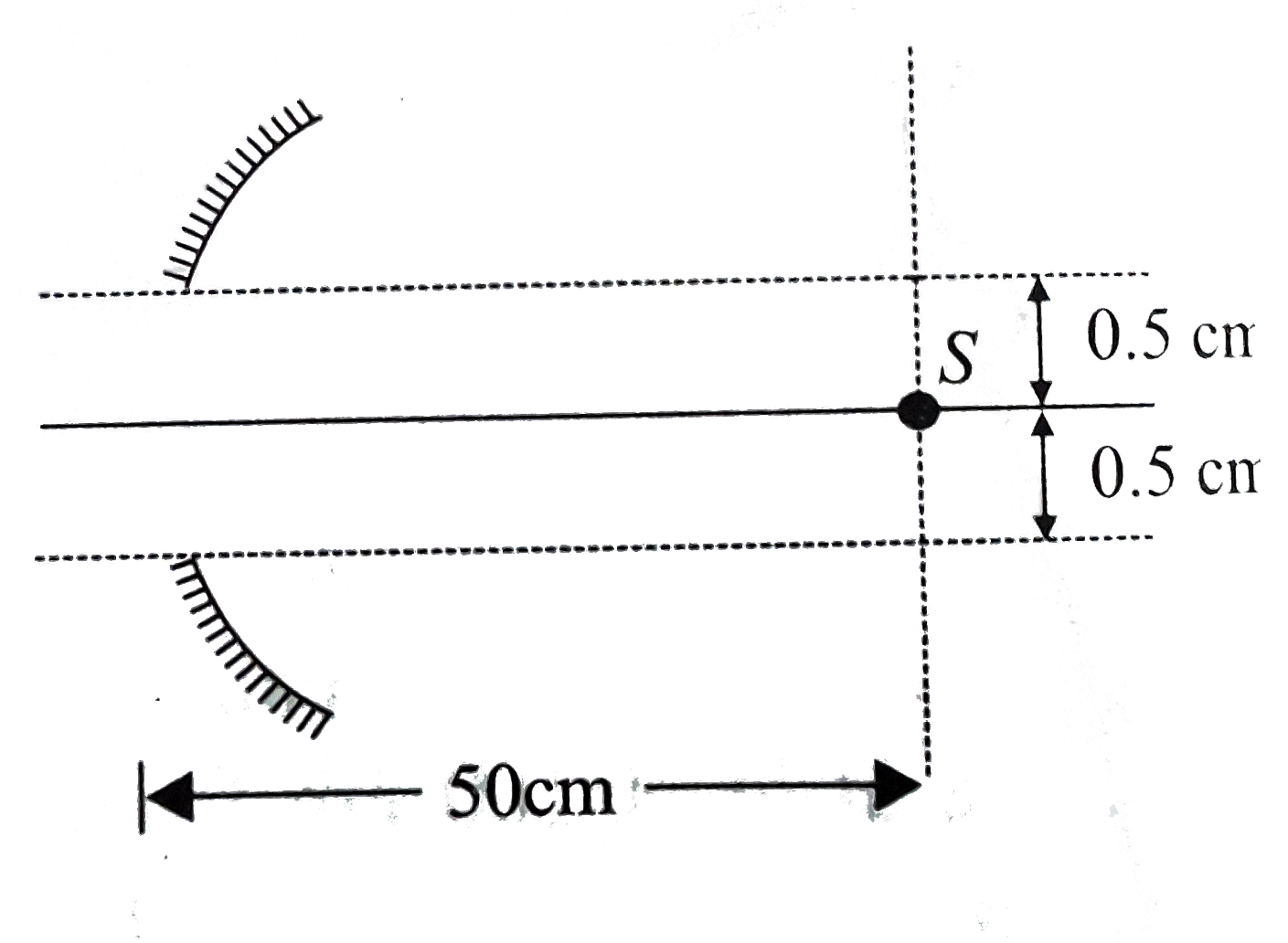
Q. In the given situation, if the two halves are each rotated (before being separated) about S by 90∘, with reference to original position, then the distance between the two images will be
 View Solution
View SolutionQuestion 428
An object AB of height 1cm lying on the axis of convex mirror of focal length20cm, at a distance of 30cm from its pole as shown in figure. Now the object starts moving with a constant speed 1cm/sec towards the pole. Calculate

Q. Magnitude of velocity of image at the given instant View SolutionQuestion 432
As shown in figure, light is incident normally on one face of the prism. A liquid of refractive index μ is placed on the horizontal face AC. The refractive index of prism is 3/2 . If total internal reflection taken place on face AC, m should be less than I√34, where I is ann integer. Find the value of I.
 View Solution
View SolutionQuestion 438
An extended object of size 2mm is placed on the principal axis of a converging lens of focal length 10cm. It is found that when the object is placed perpendicular to the principal axis the image formed is 4mm in size. The size of image when it is placed along the principal axis is ____________ mm. View SolutionQuestion 440
A thin converging lens of focal length f=1.5m is placed along y-axis such that its optical centre coincides with the origin. A small light source S is placed at (−2.0m,0.1m). Where should a plane mirror inclined at an angle θ,tanθ=0.3 be placed such that y-coordinate of final image is 0.3m, i.e. find d. Also find x-coordinate of final image.
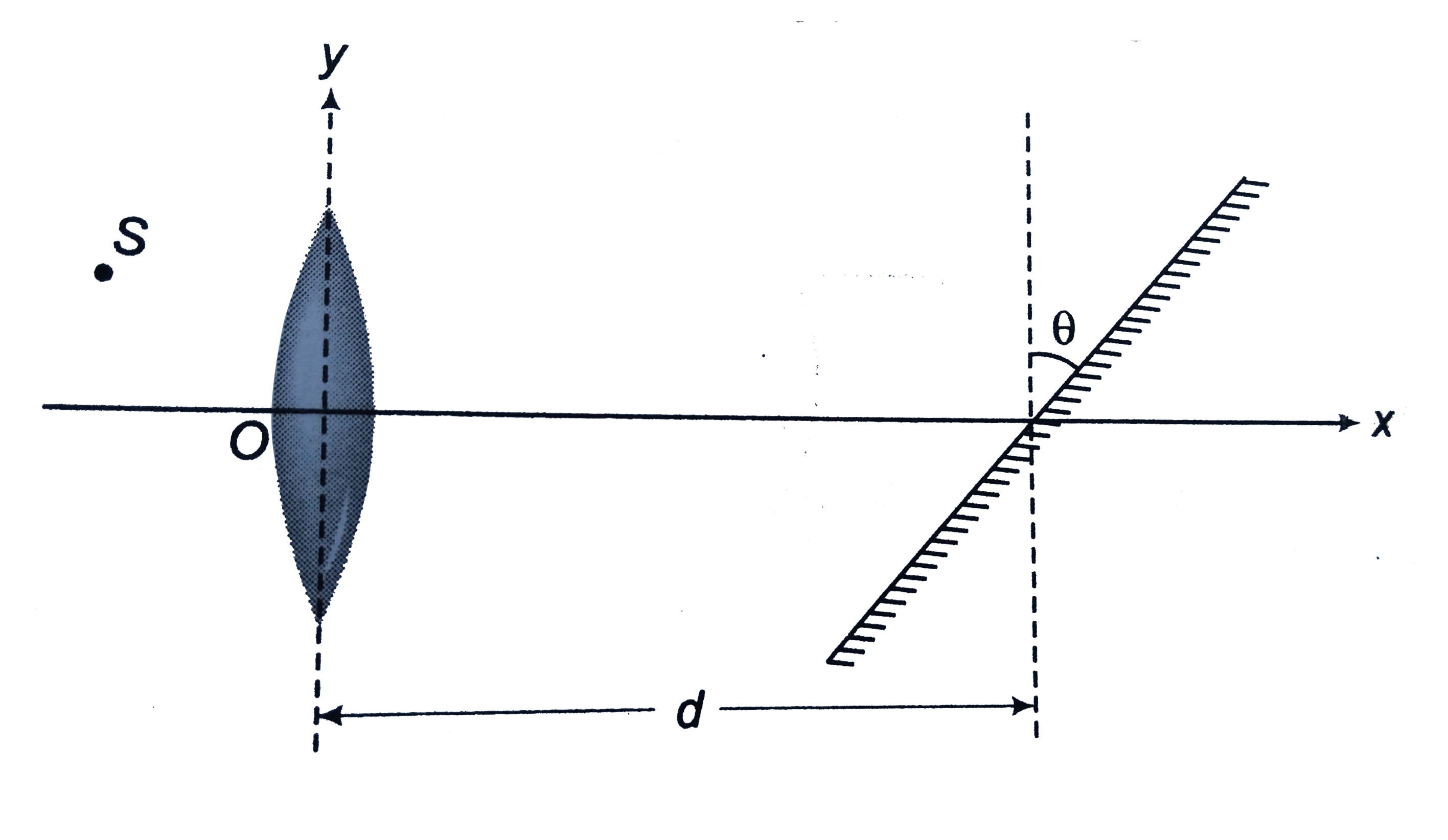 View Solution
View SolutionQuestion 443

A slab of a material of refractive index 2 shown in fig. has a curved surface APB of radius of curvature 10 cm and a plane surface CD. On the left of APB is air and on the right CD is water with refractive indices as given in the figure. An object O is placed at a distance of 15 cm from the pole P as shown. The distance of the final image of O from P, as viewed from the left is...... View SolutionQuestion 448
A slit of width d is placed in front of a l ens of focal length 0.5m and is illuminated normally with light of wavelength 5.89×10−7m. The first diffraction minima on either side of the central diffraction maximum are separated by 2×10−3m . The width d of the slit is _________m. View SolutionQuestion 456
A parallel beam of white light falls on a combination of a concave and a convex lens, both of the same material. Their foacl lengths are 15cm and 30cm, respectively for the mean wavelength in white light. On the other side of the lens system, one sees colored patterns with violet color at the outer edge. View SolutionQuestion 466
Two thin convex lenses of focal lengths f1 and f2 are separated by a horizontal distance d(d<f1 and d<f2) and their centers are displaced by a vertical separation as shown in the figure. A parallel beam of rays coming from left. Take the origin of coordinates O at the center of first lens.
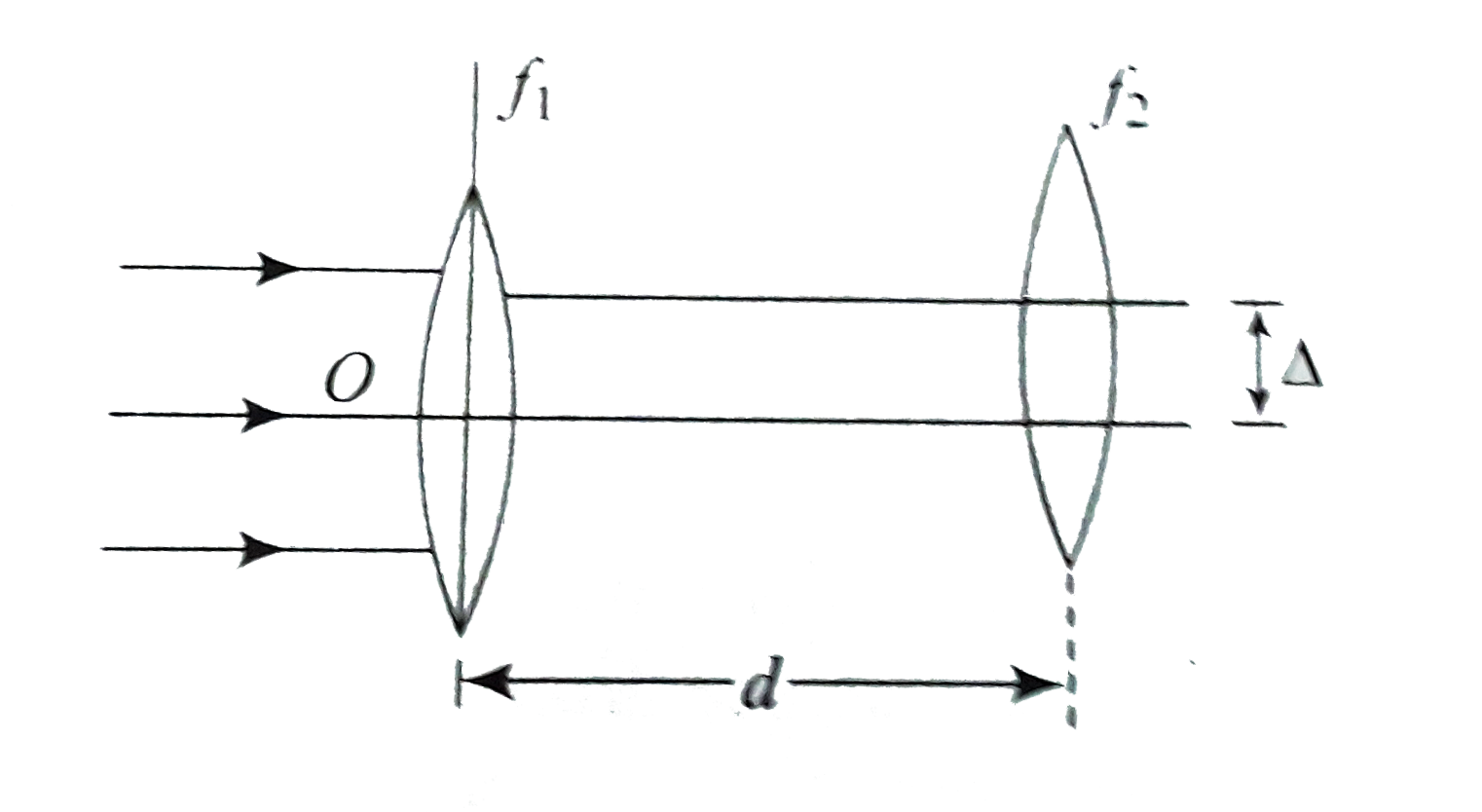
Q. Find the y-coordinate of the focal point of this lens system. View SolutionQuestion 471
The focal lengths of the objective and the eyepiece of a compound microscope are 2.0cm and 3.0cm, respectively. The distance between the objective and the eyepiece is 15.0cm. Th final image formed by the eyepiece is at infinity. The two lenses are thin. The distance, in cm, of the object and the image produced by the objective, mesured from the objective lens, are respectively. View SolutionQuestion 474
A concave mirror is placed on a horizontal table with its axis directed vertically upward. Let O be the pole of the mirror C its center of curvature and F is the focus. A point object is placed at C. It has a real image, also located at C. If the mirror is now filled with water, the image will be View SolutionQuestion 475
A spherical surface of radius of curvature R separates air (refractive index 1.0) from glass (refractive index 1.5). The center of curvature is in the glass. A point object P placed in air is found to have a real image Q in the glass. The ling PQ cuts the surface at a point O, and PO=OQ. The distance PO is equal to View SolutionQuestion 478
A point source of light S, placed at a
distance L in front of the centre of a mirror of width d,
hangs vertically on a wall. A man walks in front of the
mirror along a line parallel to th mirror at a distane
2L form it as shown.The greatest distance over which
he can see the image of the light source in the mirror is
(a) d/2 (b) d (c) 2d (d) 3 d.
 View Solution
View SolutionQuestion 479
A diverging beam of light from a point source S having divergence angle α, falls symmetrically on a glass slab as shown in the figure. The angles of incidence of the two extreme rays are equal. If the thickness of the glass slab is t and the refractive index n, then the divergence angle of the emergent beam is
 View Solution
View SolutionQuestion 480
A rectangular slab ABCD, of refractive index n1 , is immersed in water of refractive index n2(n1<n2). A ray of light is incident at the surface AB of the slab as shown in Fig. Find the maximum value of angle of incidence αmax, such that the ray comes out only from the other surface CD.
 View Solution
View SolutionQuestion 484
An observer can see through a pin-hole the top end of a thin<br> rod of height h,placed as shown in the figure. The beaker height is 3h and its radius h. When the beaker is filled with a liquid up to a height 2h, he can see the lower end of the rod. Then, the refractive index of the liquid is

(a) 52 , (b) √52 , (c) √32 , (d) 32View SolutionQuestion 487
The size of the image of an object, which is at infinity, as formed by a convex lens of focal length 30 cm is 2 cm. If a concave lens of focal length 20 cm is placed between the convax lens and the image at a distance of 26 cm from the convex lens, calculate the new size of the image.View SolutionQuestion 498
In an experiment to determine the focal length (f) of a concave mirror by the u−v method, a student places the object pin A on the principal axis at a distance x from the pole P. The student looks at the pin and its inverted image from a distance keeping his/her eye in line with PA. When the student shifts his/her eye towards left, the image appears to the right of the object pin. Then,View SolutionQuestion 502
A ball is dropped from a height of 20m above the surface of water in a lake. The refractive index of water is 4/3. A fish inside the lake , in the line fall of the ball, is looking at the ball. At an instant when the balll is 12.8m above the water surface, the fish sees the speed of ball as . View SolutionQuestion 504
A bi-convex lens is formed with two thin plano-convex lenses as shown in the figure. Refreactive index n of the first lens is 1.5 and that of the second lens is 1.2. Both the curved surface are of the same radius of curvature R = 14 cm. For this bi-convex lens, for an object distance of 40 cm, the image distance will be
 View Solution
View SolutionQuestion 511
A ray of light travelling in a transparent medium falls on a surface separating the medium from air at an angle of incidence 45∘. The ray undergoes total internal reflection. If n is the refractive index of the medium with respect to air, select the possible value (s) of n from the following View SolutionQuestion 513
A student performed the experiment of determination of focal length of a concave mirror by (u-v) method using an optical bench of length 1.5m. The focal length of the mirror used is 24cm. The maximum error in the location of the image can be 0.2cm. The 5 sets of (u,v) values recorded by the student (in cm) are (42,56),(48,48),(60,33),(78,39). the data set (s) that cannot come from experiment and is (are) incorrectly recorded, is (are)
(a) (42,56)
(b)(48,48)
(c)(66,33)
(d) (78,39).View SolutionQuestion 515
In each of the questions, assertion(A) is given by corresponding statement of reason (R) of the statemens. Mark the correct answer.
Q. Statement I: The formula connecting u,v and f for a spherical mirror is valid only for mirrors whose sizes are very small compared to their radii of curvature.
Statement II: Laws of reflection are strictly valid for plane surfaces, but not for large spherical surfaces.View SolutionQuestion 520
Water (with refractive index =4/3) in a tank is 18cm deep. Oil of refractive index 7/4 lies on water making a convex surface of radius of curvature R=6cm as shown. Consider oil to act as a thin lens. An object S is placed 24cm above water surface. The location of its image is at 'x' cm above the bottom of the tank. Then x is
 View Solution
View Solution






